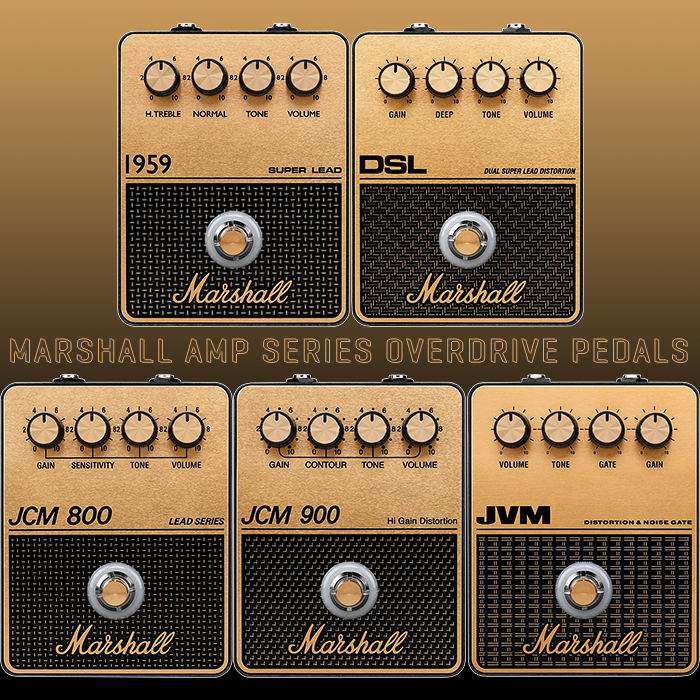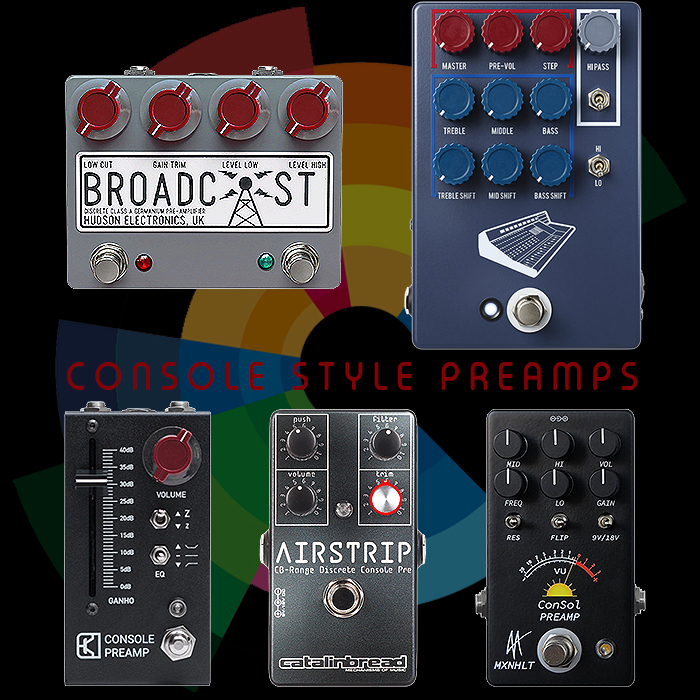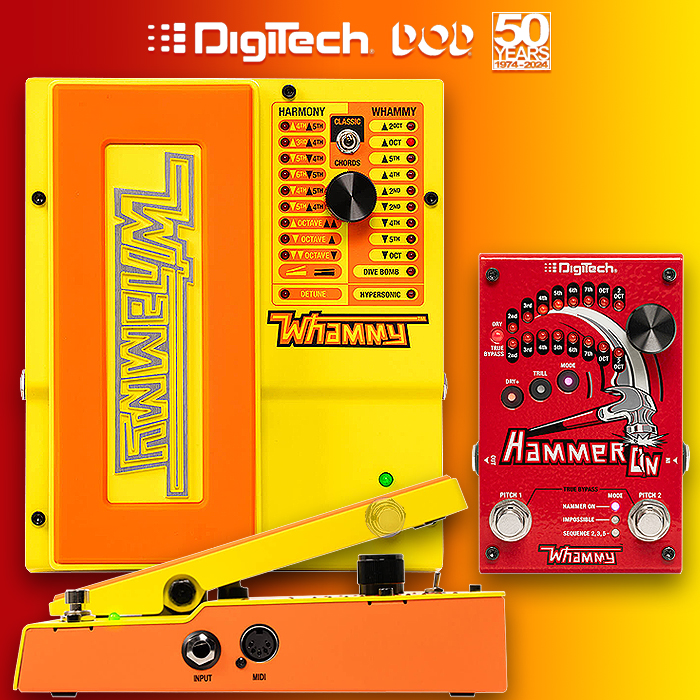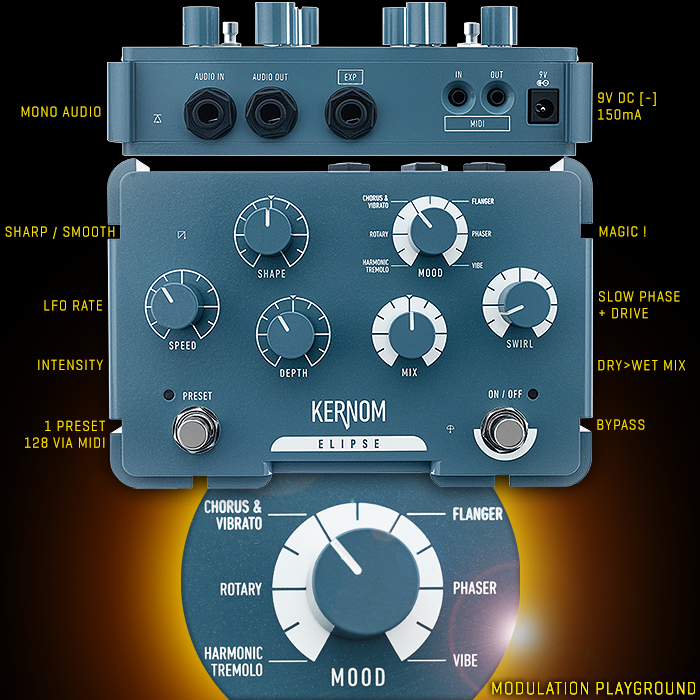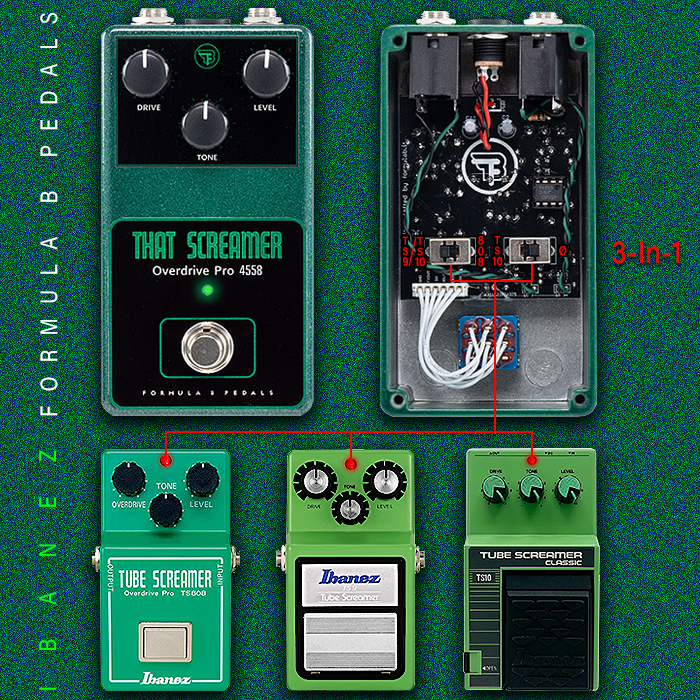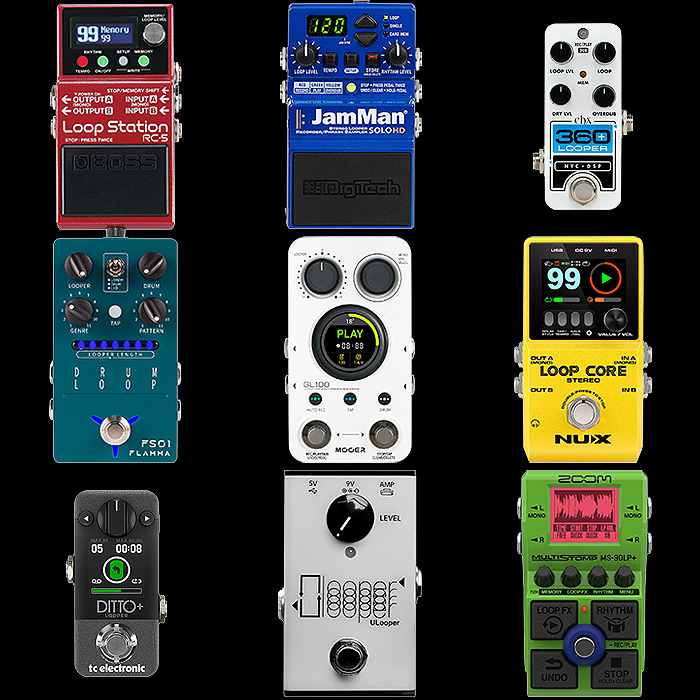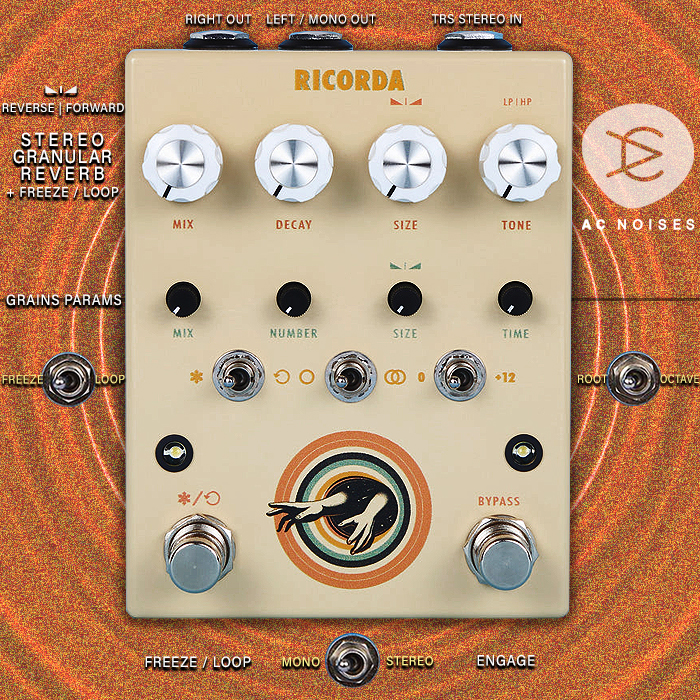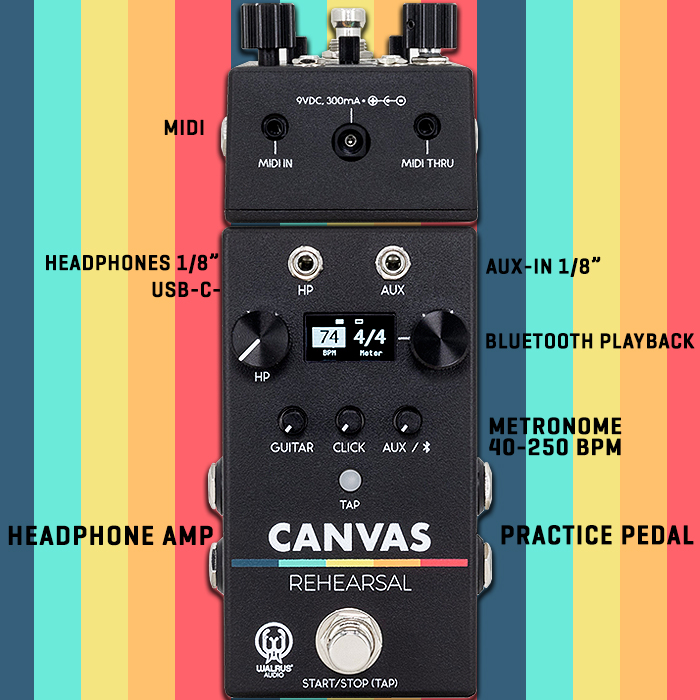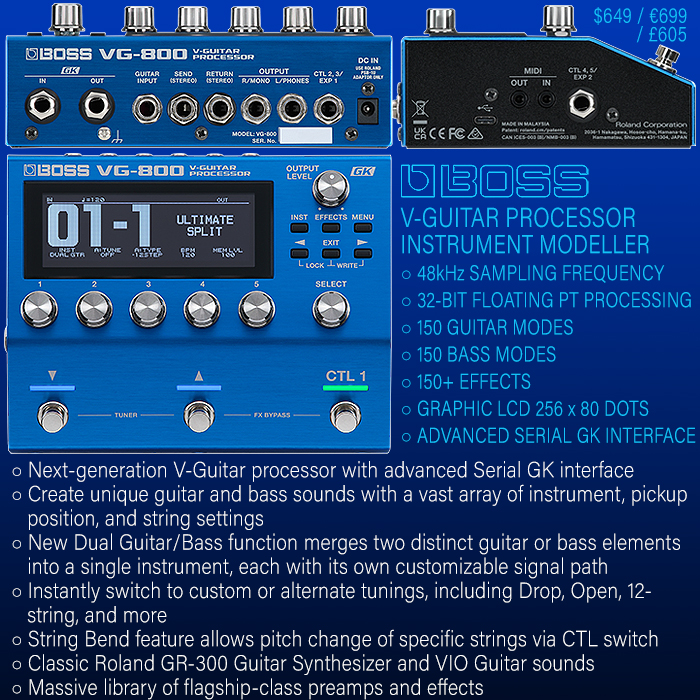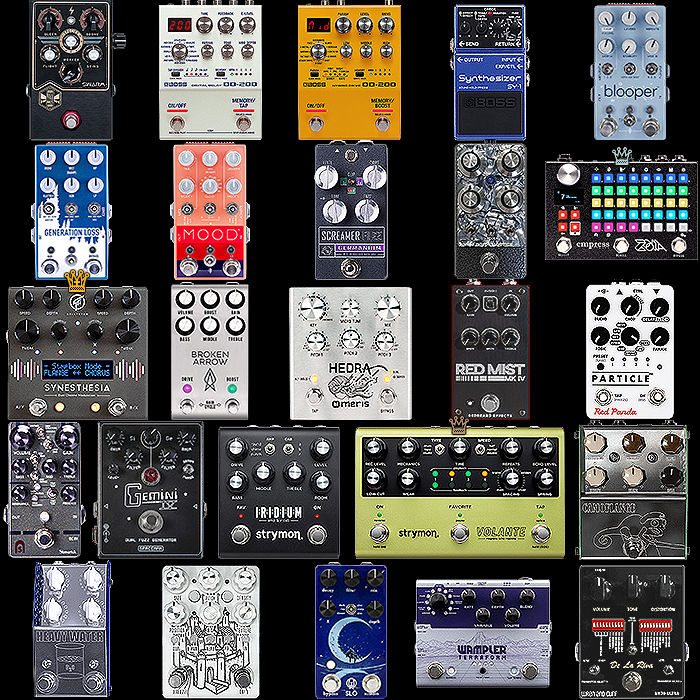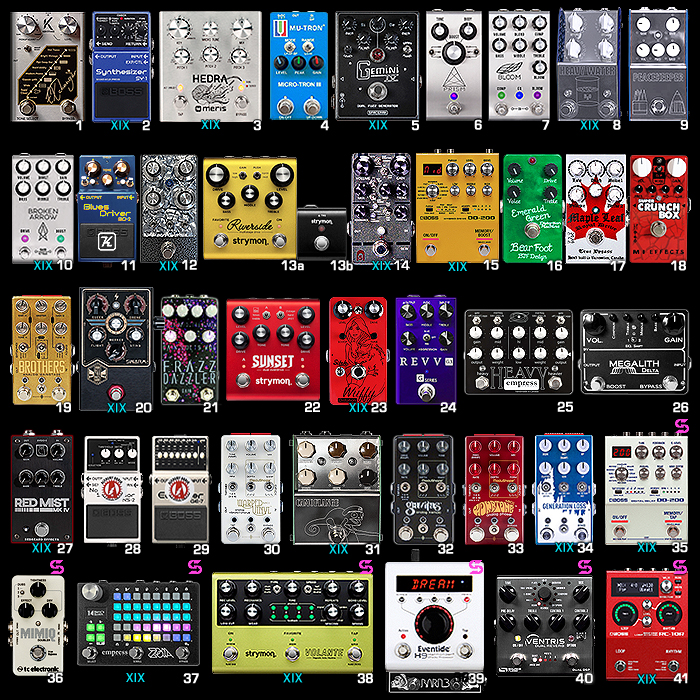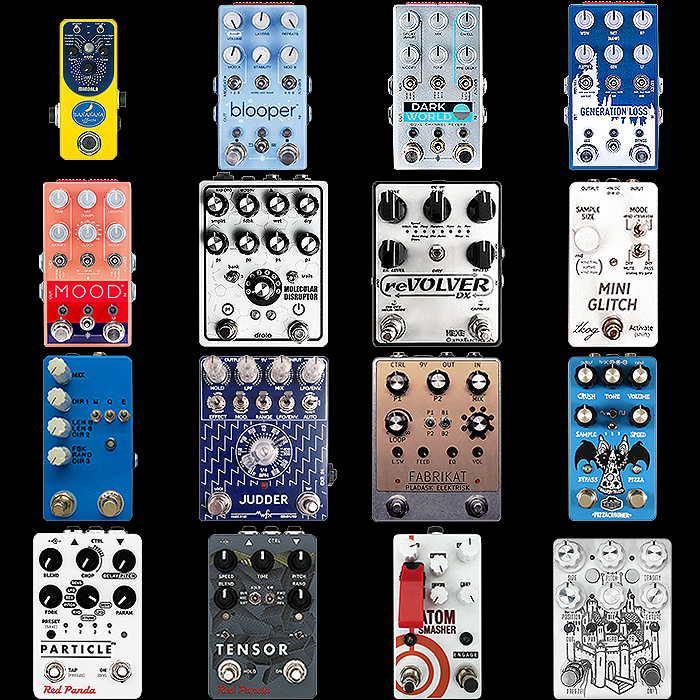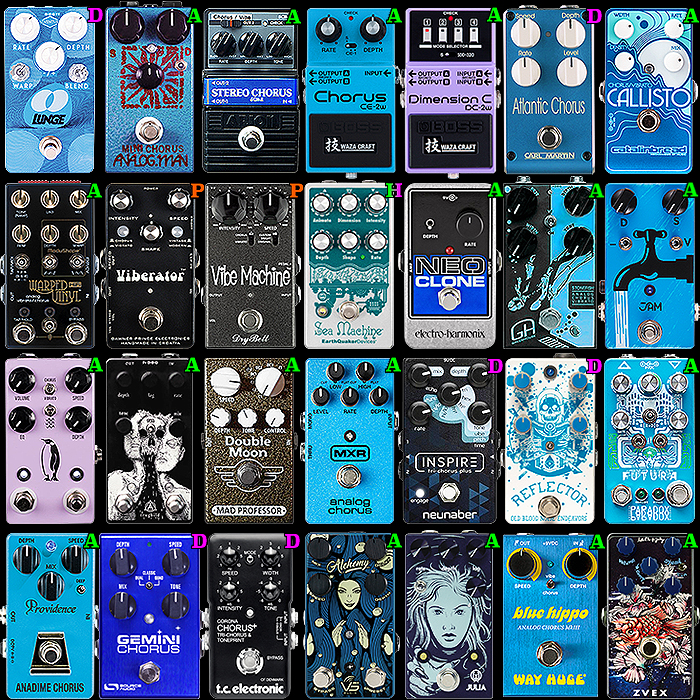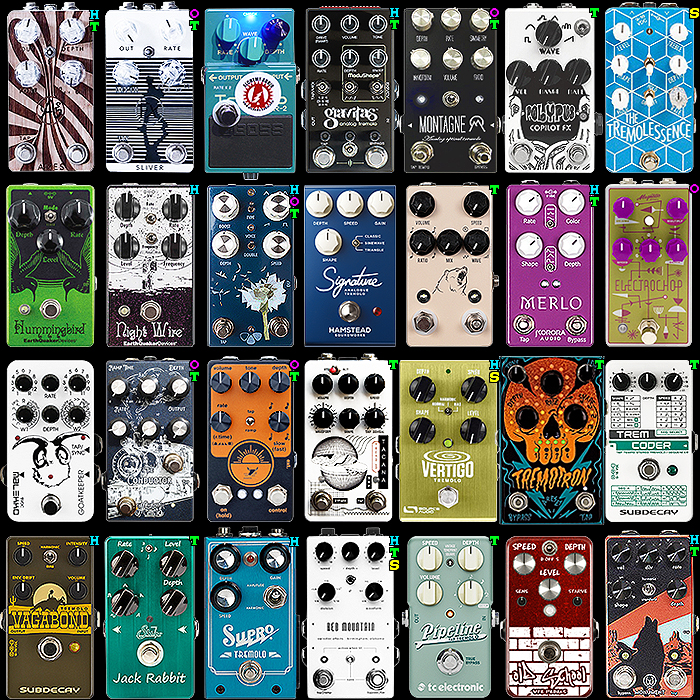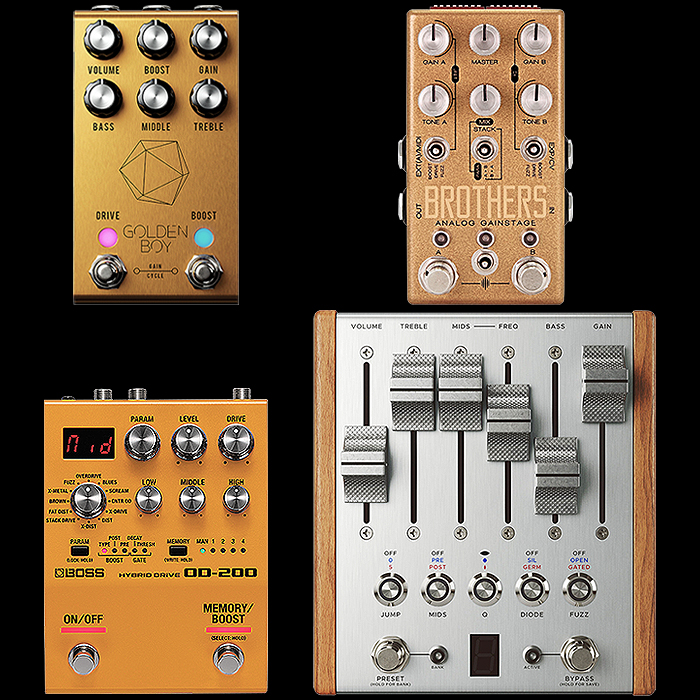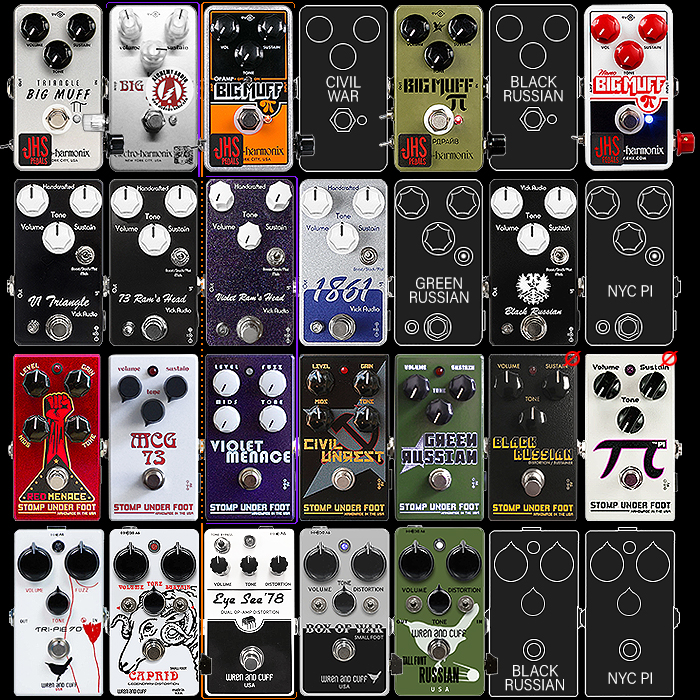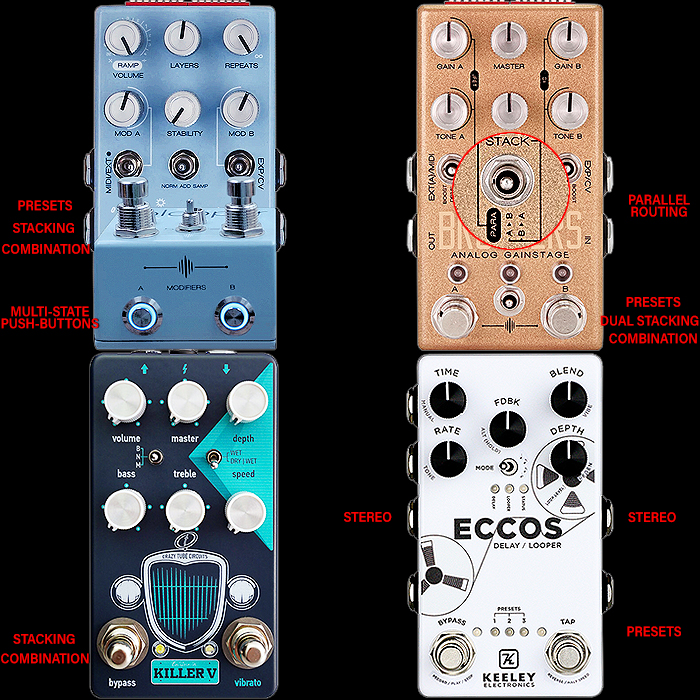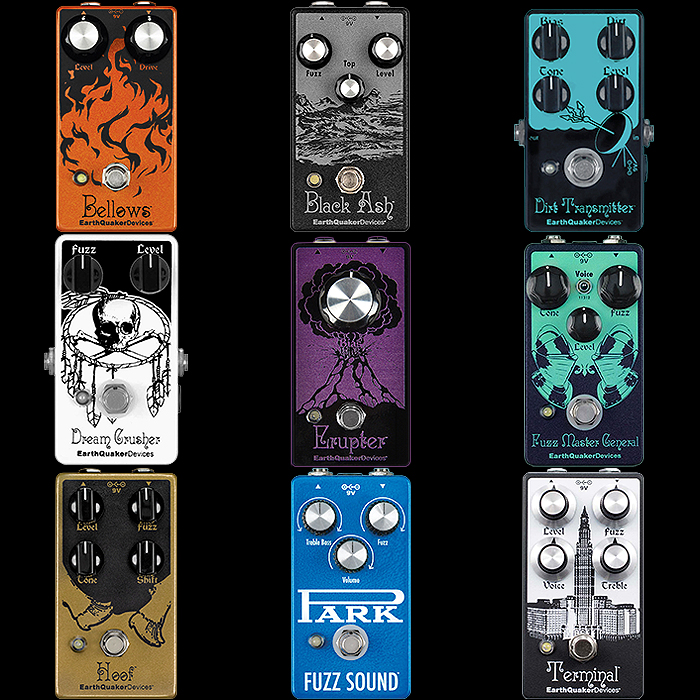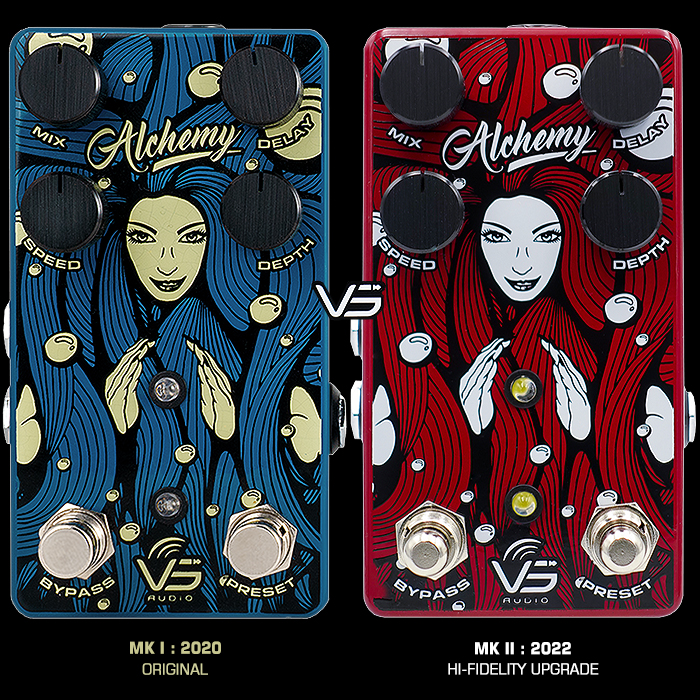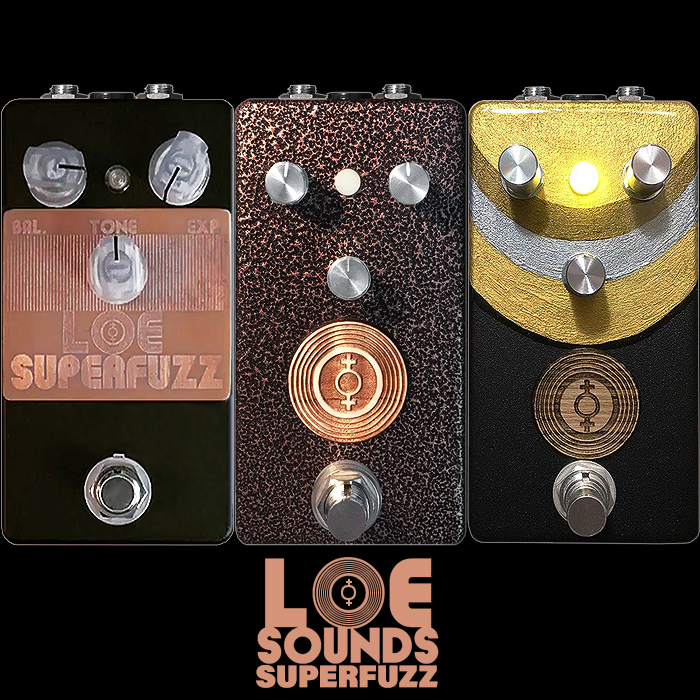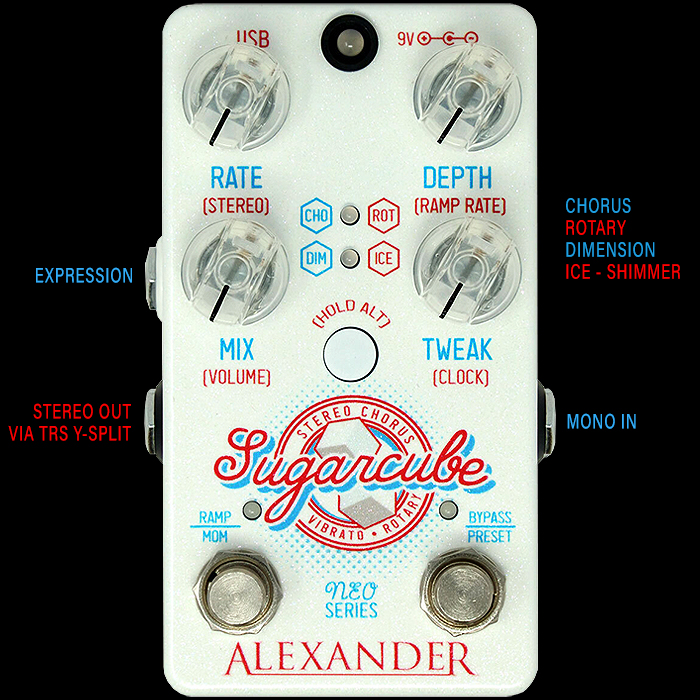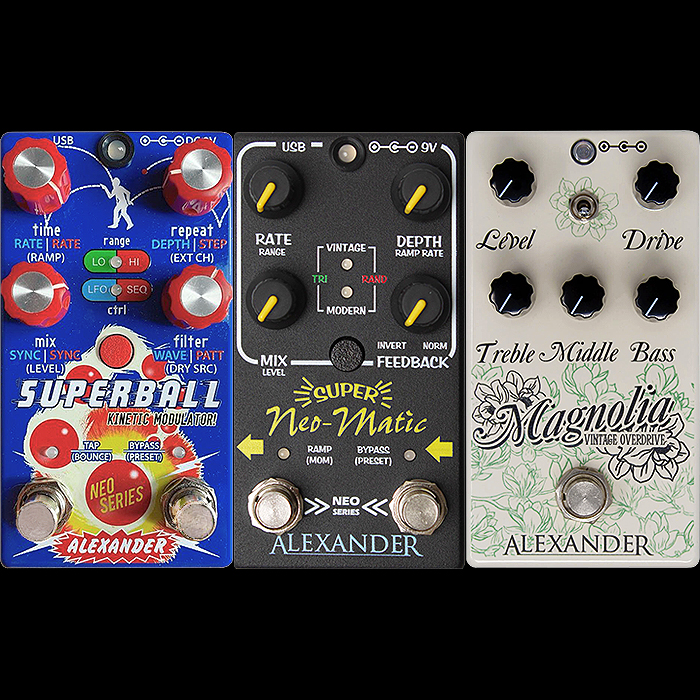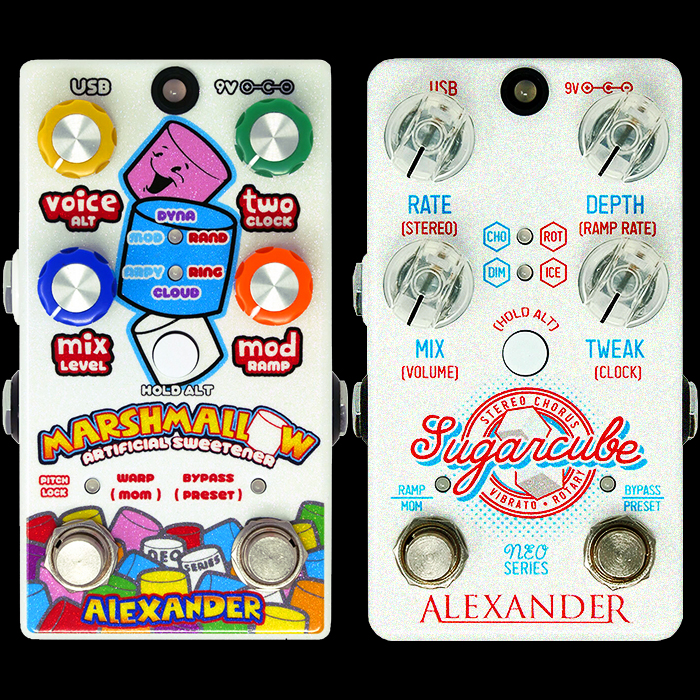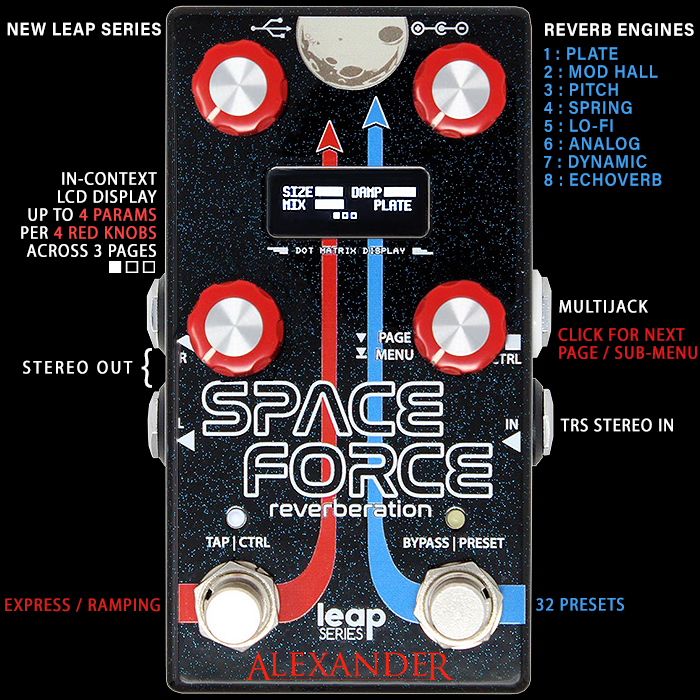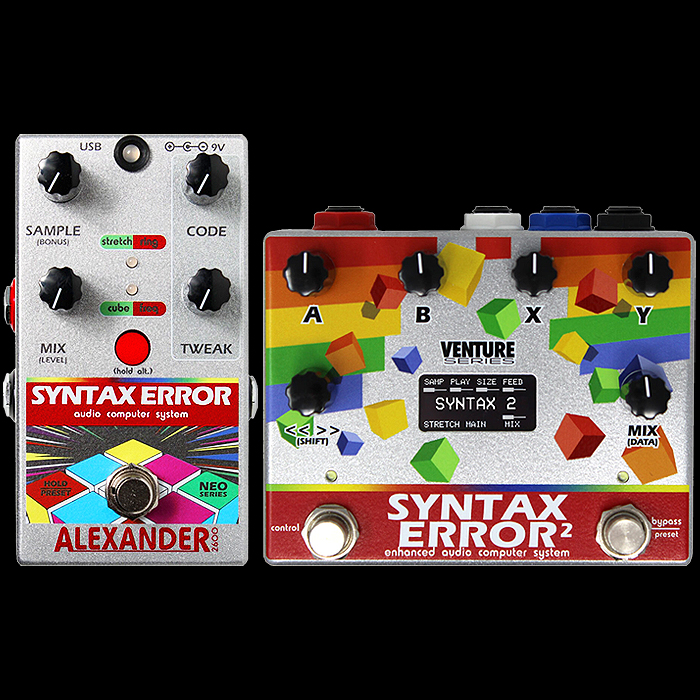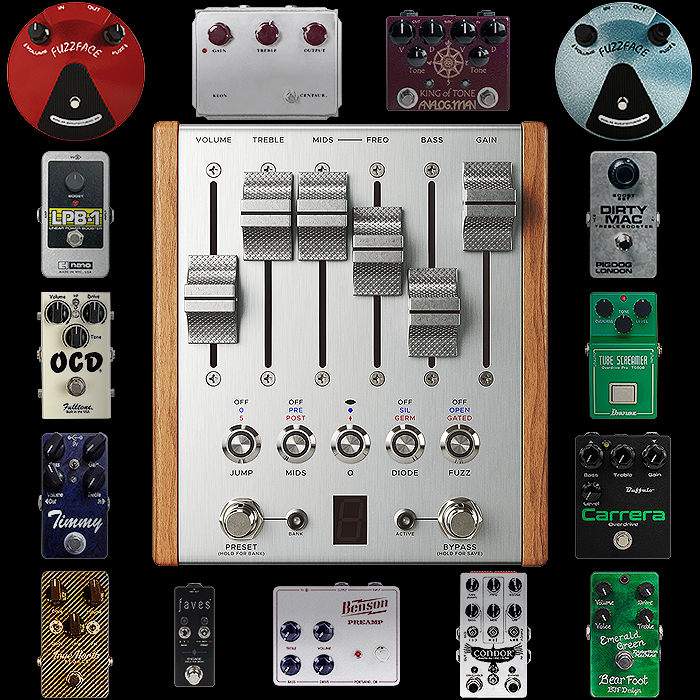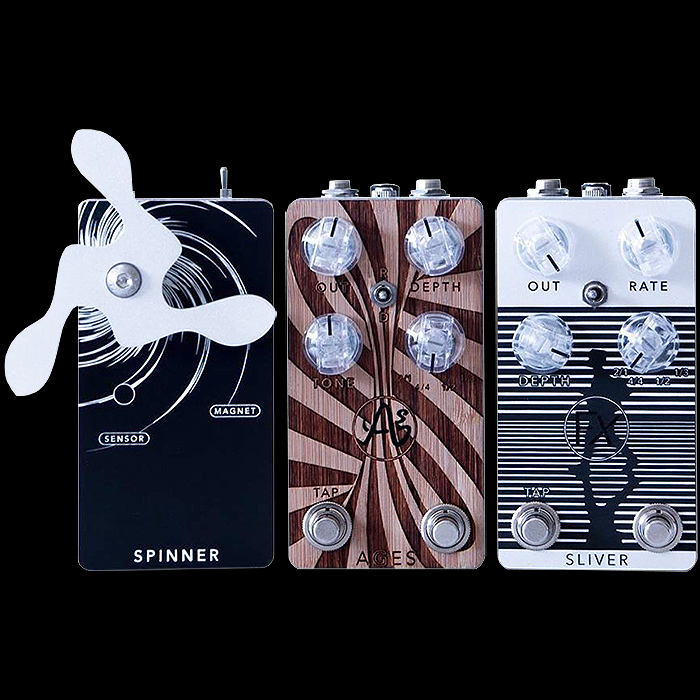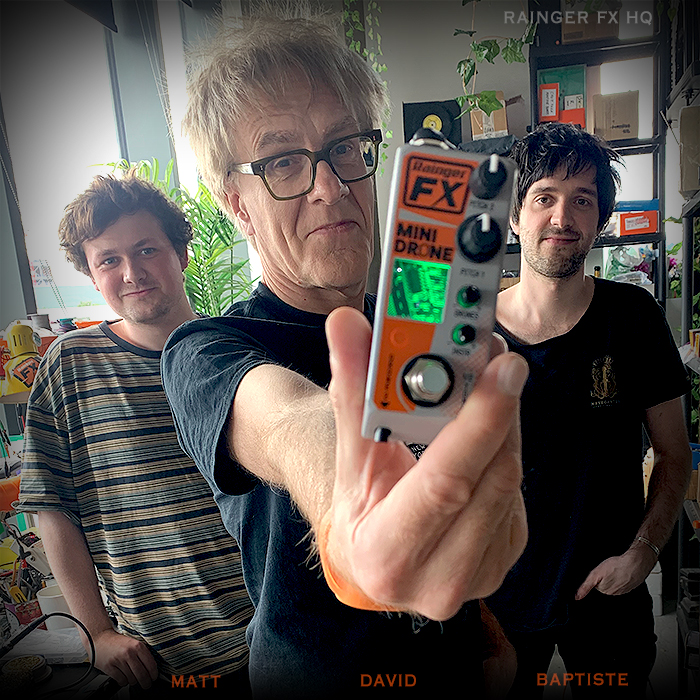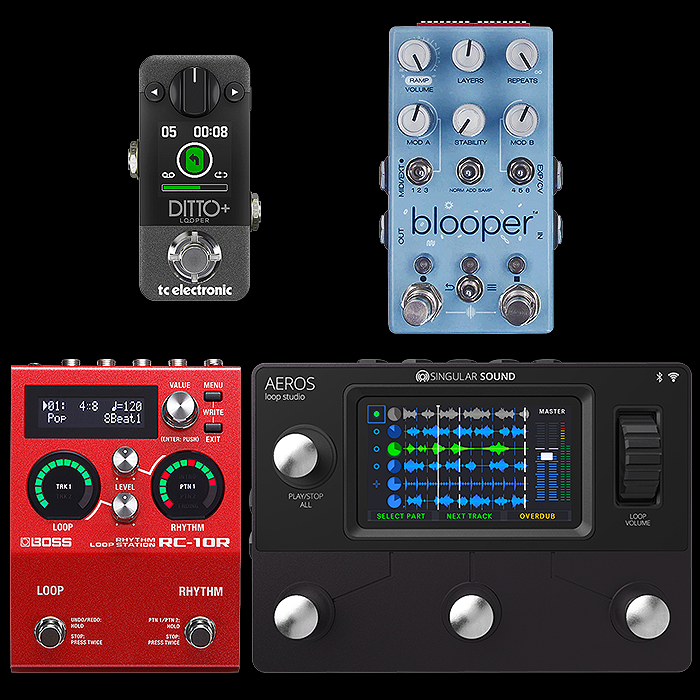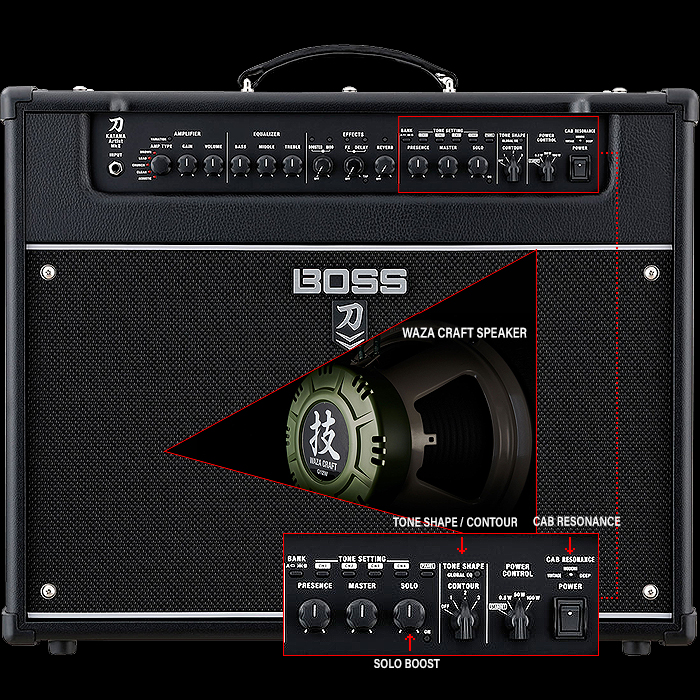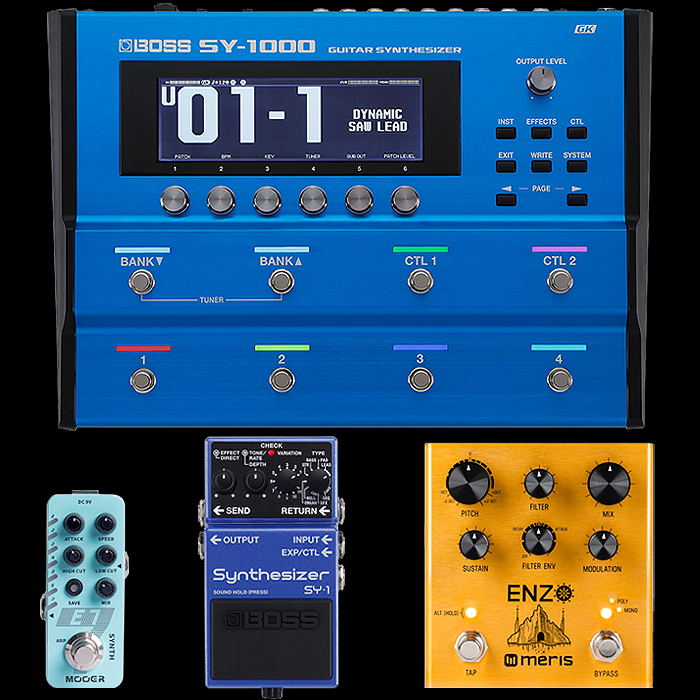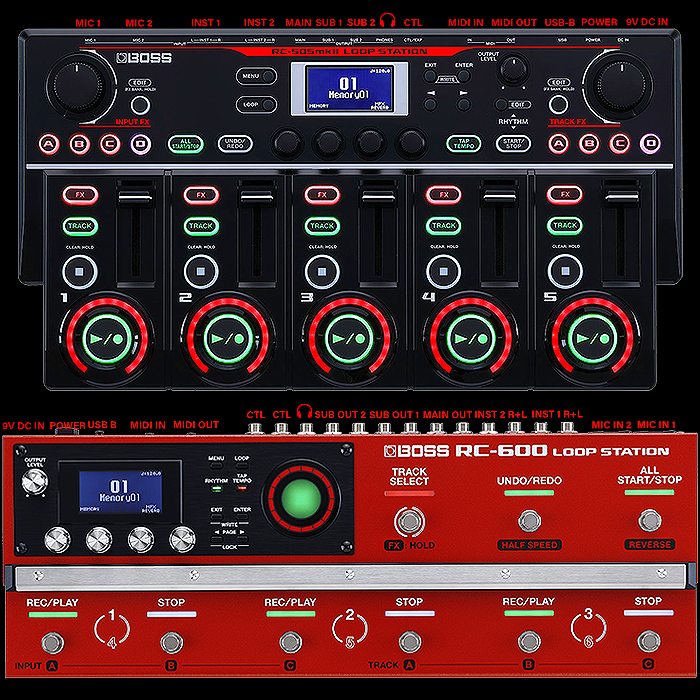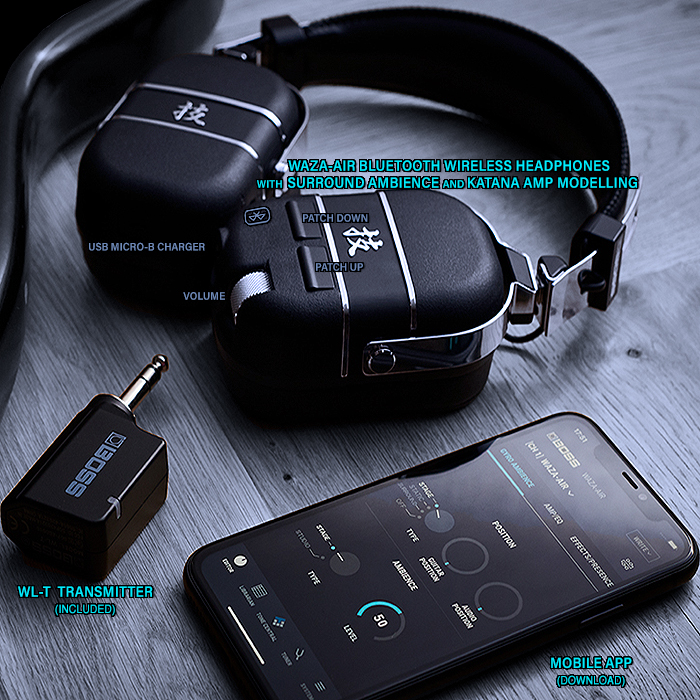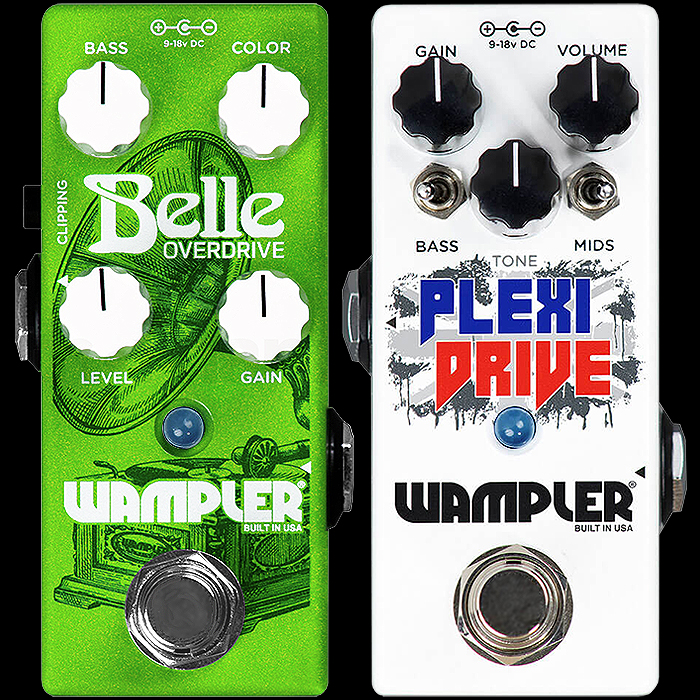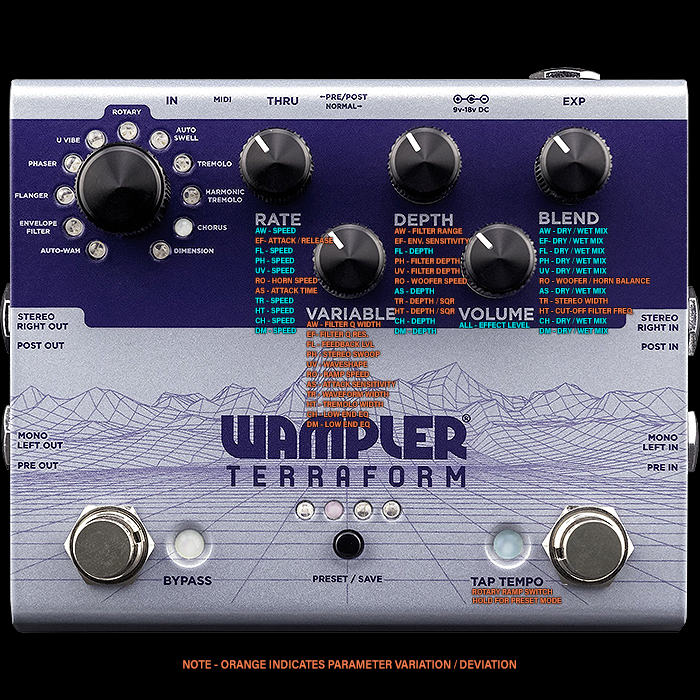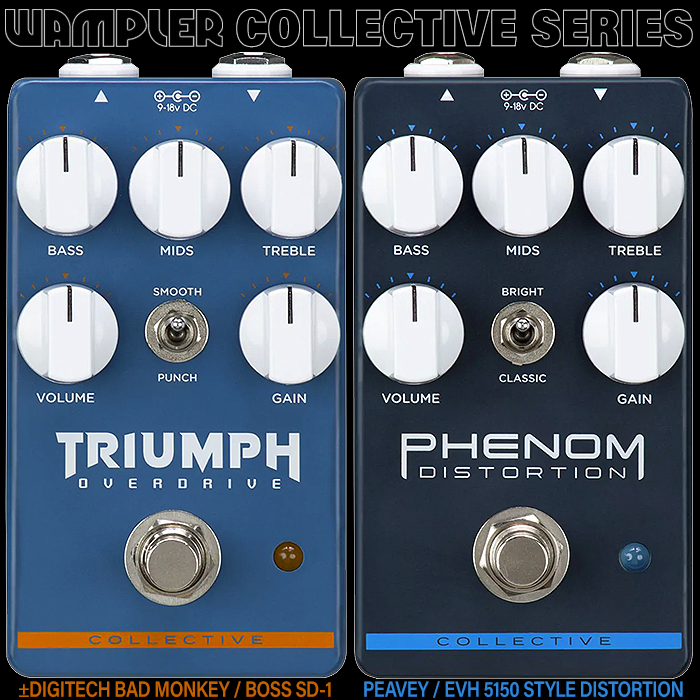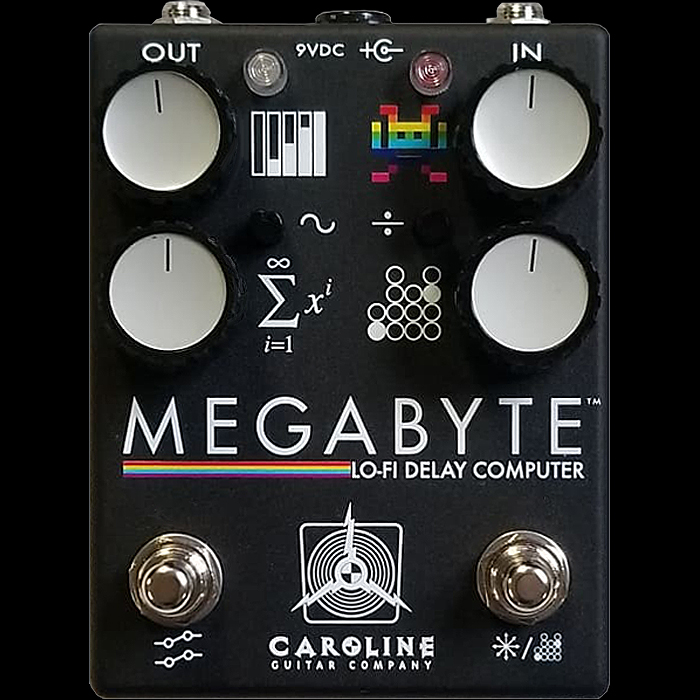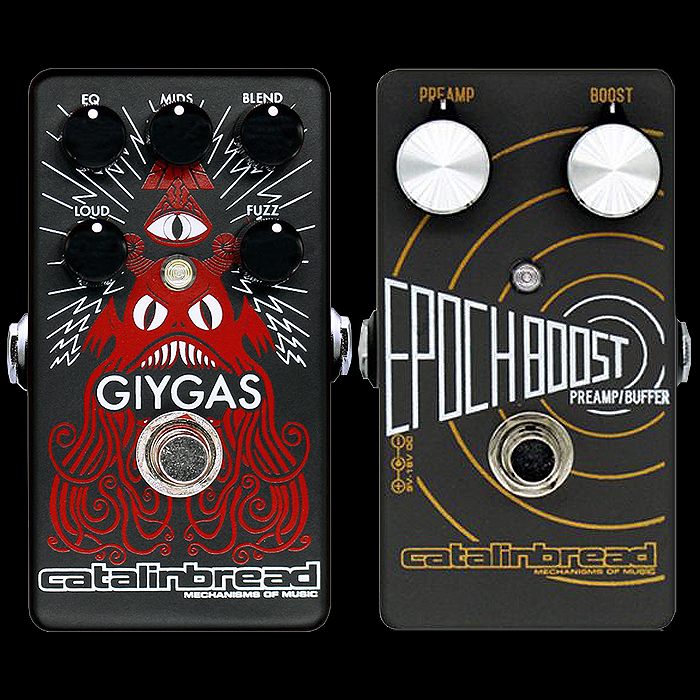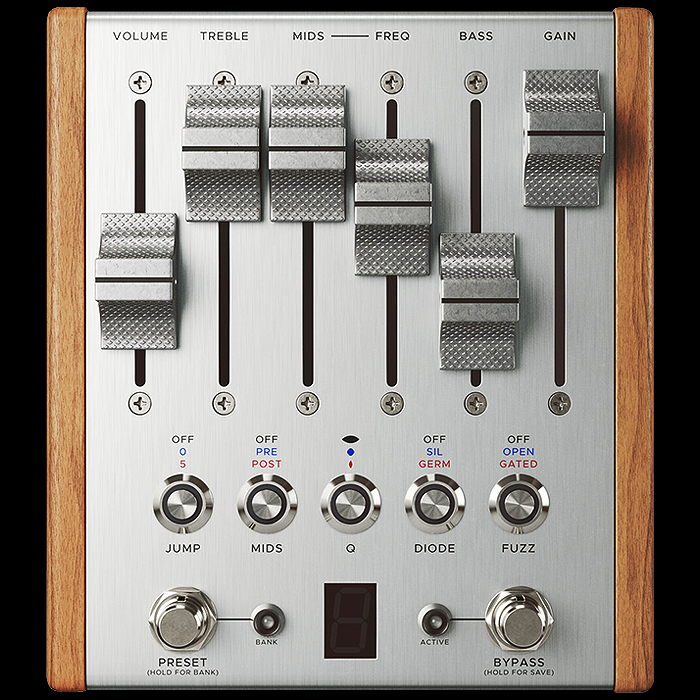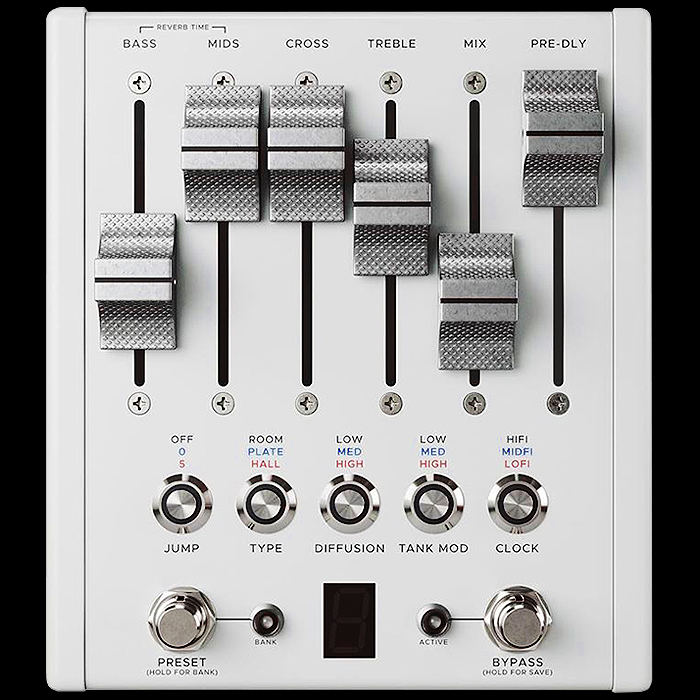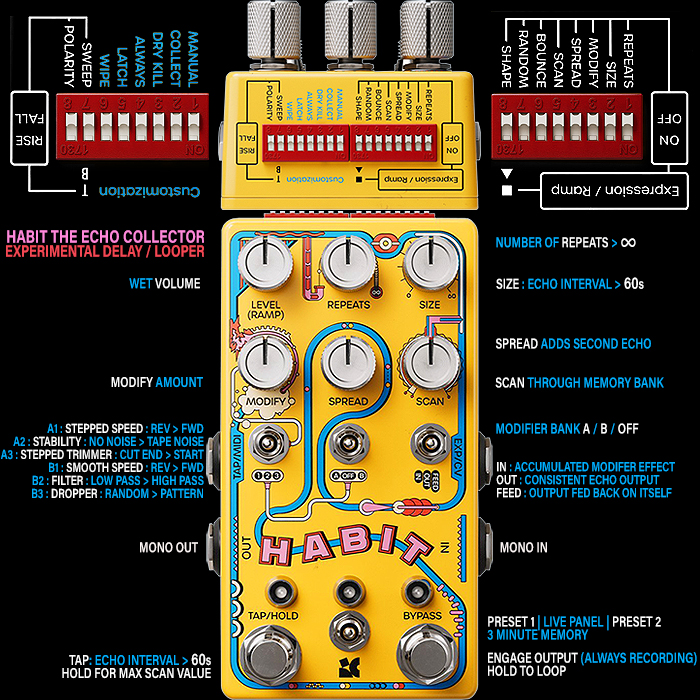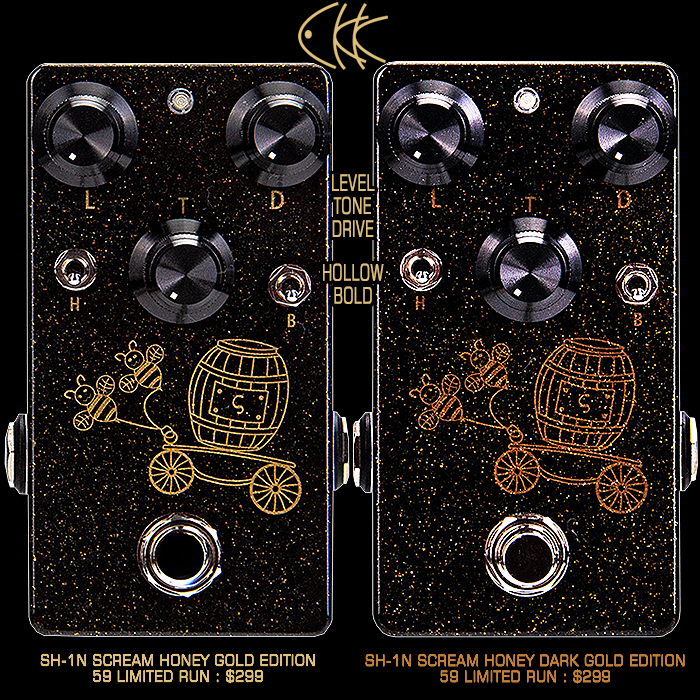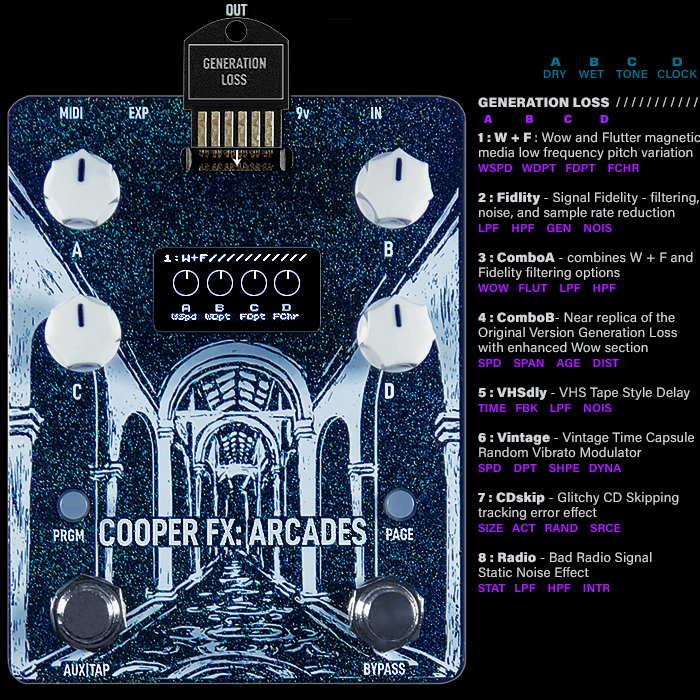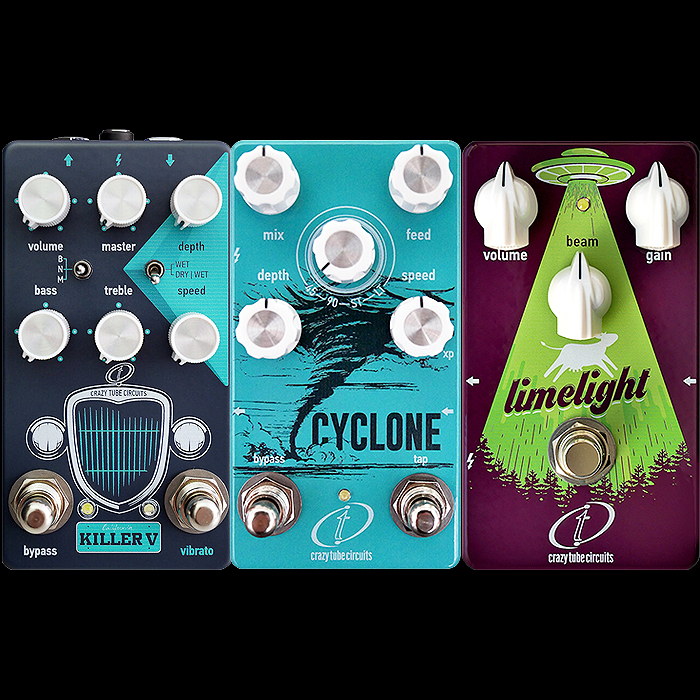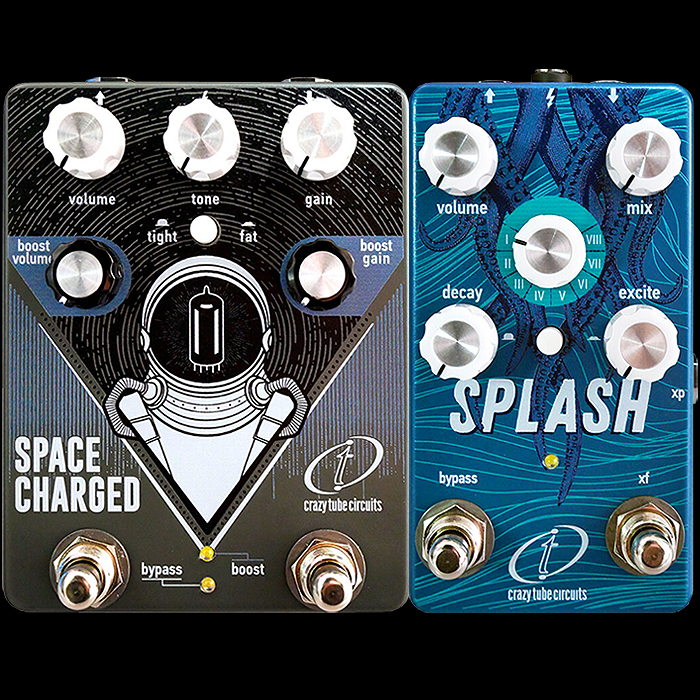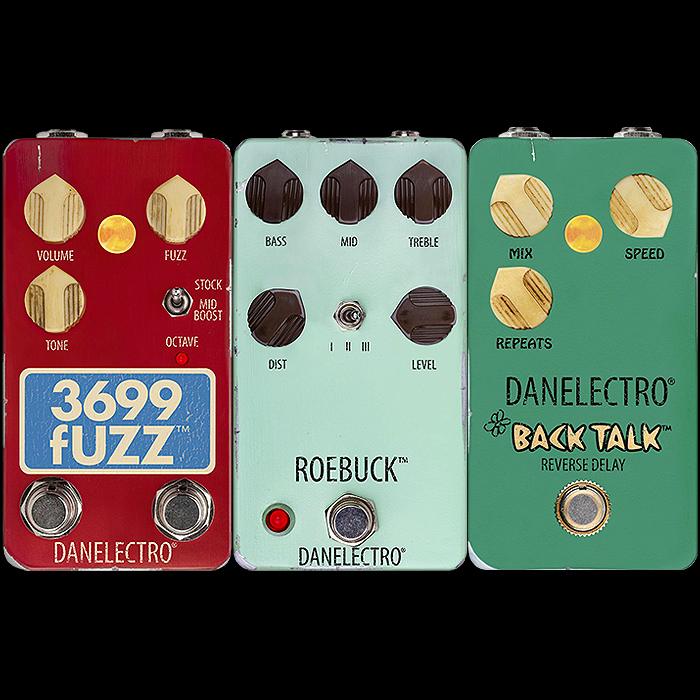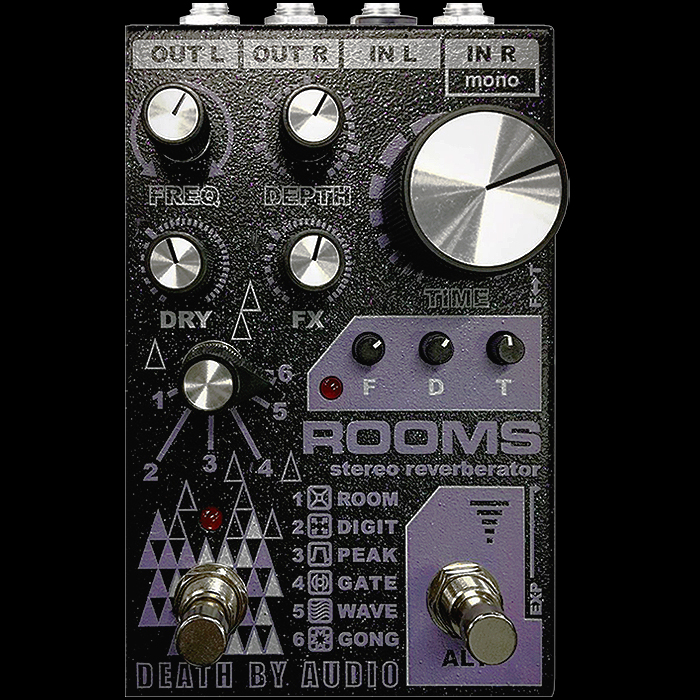Best of New Guitar Pedals Released in and around the 2020 Winter NAMM Show
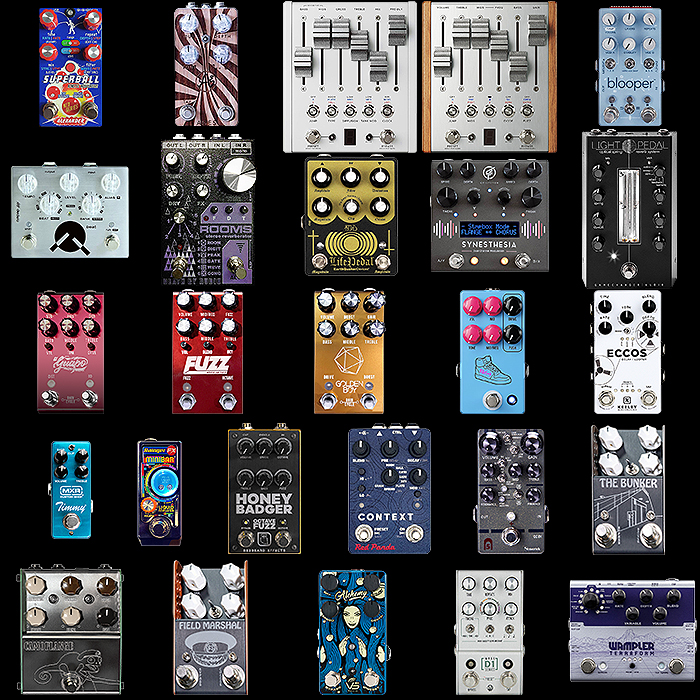
So despite the perilous state of the world, the first NAMM of the new decade actually turned out to be pretty stellar. I had thought that last year’s exceptional show might end up as the all-time high water mark - but this one turned out just as many pleasant surprises.
Slightly different to last year there were a more significant number of pedals announced and launched in advance of the show - while a lot of pedals at the show had very little by way of collateral and some are still not represented by official Images or YouTube demos or teasers even. I spent a lot of time in Photoshop reworking variously oddly angled or frequently inadequate/unusable product shots - buffing them up to GPX standard.
Below you will see the Longlist of circa 180 pedals that I am currently aware of - more will likely be added as they are made known to me. In any case from a longlist of 180 I intended to pick out 50 notables for individual article features - I in fact got to 48 before I ran out of steam and time. I intended to go from c200 > 50 > My Top 25 - and actually ended up with 26. Note that I only feature pedals on this site that I personally like, that properly appeal to me in some significant way, and I would happily have in my rig.
I toyed for the longest time with the new Beetronics Fatbee Overdrive - which sounds amazing, but I can’t get over the unergonomic yet beautiful enclosure - the sort with the knobs on the back of the device facing away from you. I play individual pedals still because I like the hands-on and visible interactive aspects of those pedals - you should be instantly able to grasp where you’re at and what you need to tweak - which you can’t very well do if the controls are facing away from you - also having any sort of controls on the back is typically suboptimal as it may butt up against Pedalboard structures or similar. So that’s an example of the process I go through - each pedal is evaluated on a series of criteria which of course include the practicality and usability aspects.
There were a number of pedals at the show that were just too large to be fully practically usable for me - also the standard of finish and graphics on some of those pedals could be a little sub-par (possibly prototypes therefore). The aesthetics of the pedals are important too - as an ugly pedal will distract from the practicality of its legibility and usability! So what I’m trying to say - is that this was a pretty massive exercise - sleepless nights etc. but I’m pretty happy with the results and the final reckoning!
I always like to have at least some sound examples accompanying my features - ideally a YouTube video or two before I post to the blog - but there are some show pedals that still have no references. Supposedly Hamstead Soundworks introduced a new pedal at the show - which is still to be officially launched - but there seems to be no coverage to-date and no references on any media that I can see. For the Friedman Smallbox Drive/Distortion PreAmp pedal we have a number of Instagram pics and video features where the pedal is shown but not played - meaning that this is likely a very early prototype teaser sample - much like the Keeley Eccos was when it first put in a show appearance at the start of last year.
Oddly for this year I already have 5* of the NAMM-featured pedals which were variously released in mid-to-late December right up until just before the show. This includes the Chase Bliss Audio Blooper, EQD Life Pedal V2, GFI Synesthesia, Sinvertek N5 Drive Plus, and the Thorpy Camoflange Flanger.
For me there were several winners at the show as you can see in the above visual. And for the pedal of the show it’s a somewhat odd tie between the Gamechanger Audio Light Pedal Optical Spring Reverb and the Rainger FX Minibar Liquid Analyser Overdrive. Both ingenious is their own way and both featuring some practicality challenges. Overall the technical achievement has to go to Gamechanger - while I feel David Rainger will sell bucket-loads of his Minibar. It has something of a novelty/gimmick aspect to it - but the technology here is really impressive - and I’m sure that it will evolve into even more impressive control interfaces.
Looking at my NAMM pedal favourites by numbers - there are 3 Chase Bliss Pedals in my favourite 26, 3 Jackson Audio and no less than 4 Adrian Thorpe creations - including the Redbeard Honey Badger. Of that list of 26 I already have 5, and have determined that I will have 12 more of the 26 at least by year end :
- Anasounds Ages Harmonic Tremolo
- Chase Bliss Audio Automatone PreAmp MKII
- Jackson Audio El Guapo Programmable Distortion + Overdrive (JCM800 + Tube Screamer)
- Jackson Audio Modular Fuzz + Octave (Modern Fuzz + Foxx Tone Machine)
- Jackson Audio Joey Landreth signature Golden Boy Programmable Overdrive + Boost (Blues Breaker + Boost)
- JHS PG-14 Paul Gilbert Signature Distortion
- MXR Paul Cochrane Mini Timmy
- Rainger FX Minibar Liquid Analyser Overdrive
- Redbeard Effects Honey Badger Sub-Octave Fuzz
- ThorpyFX The Bunker Intermodulation Distortion
- ThorpyFX Field Marshal Gated Fuzz
- Vs Audio Alchemy Analog BBD Chorus with Presets
I will provide further details of each below and explain how these 26 came to be listed and the reasons for my likely acquisitions - which are really wishlist intentions as not all may happen for the usual variety of reasons!
In any case please find to follow some details on each of my Top 26 followed by the New Release Longlist I compiled for the show. Note that pedals are listed / displayed in alphabetical order - apart from the Gamechanger Audio Light Pedal which I needed to move to the side in order to accommodate elegantly in the below visual!
Top 26 Favourite Pedals Featured and Introduced at 2020 Winter NAMM - alphabetical

Note that each of the below 26 has more in-depth features posted on this blog during the course of NAMM - so you can refer to those if you require more details.
Alexander Pedals Superball Kinetic Modulator - $199/£199
I've said before that I really should own more Alexander Pedals by now (I have 3) - I've featured so many of them on this site over the years - for each show they present something new and innovative and I really liked their Superball Kinetic Modulator and Magnolia Vintage Overdrive from this year's new trio. The Superball is probably their standout pedal in this batch - with its clever bouncing-ball dynamic modulation which follows the springy high amplitude then sort of skittering acceleration pattern as the kinetic energy of the ball gets released/expended. This has a degree of novelty to it too - not so far away from the Rainger FX Minibar. Yet all-round the pedal has some new and intriguing algorithms and slightly different sounds to what we've previously heard - of course the pedal comes with secondary / alt functions on knobs and 4 presets onboard per all NEO Series pedals. I still wish Alexander would do some stereo-capable pedals of this ilk - so they would be more suitable/versatile for use in my own rig. A lot of the Alexander Pedals are somewhat leftfield in approach and sound and largely appeal to more adventurous and experimental players. Up until now and likely ongoing - I find I always have other priorities and preferences that suit me better - you have to admire the constant and consistently great innovation though!
Anasounds Ages Analog Harmonic Tremolo - €249
There are so many Tremolos out there and I've covered most of them on this site at one time or another - truth is I have 3 really great tremolos already, and have always really loved my main CBA Gravitas - which happens to have a couple of Harmonic Tremolo modes too. Something about the Anasounds Ages Tremolo properly appeals to me though - possibly with or even without Anasounds' cool new fidget-spinner-style Spinner Expression controller. I've actually had my eye on Rock Fabrik Effect's Kuek Touch-Sensitive Dynamic Tremolo too - but which is too large for me to accommodate in my chains since I added the Thorpy Camoflange - I only have space for a compact pedal format - and the new Anasounds Ages has some cool dynamic Touch Sensitivity of its own with a much simpler control interface than the Kuek's 9 knobs. Then again I haven't seen all the internal trim-pots that Anasounds like so much. In any case I fancy taking a break from my two main Tremolos - the Gravitas and Stone Deaf Tremotron - and something about this particular variety really appeals to me - so it's not a particularly urgent need - but will likely happen later in the year.
Chase Bliss Audio Automatone CXM 1978 Reverb - $749/£749 Est.
I guess we had some very significant Reverb Pedal releases this year - with this Lexicon 224 -inspired effort, DBA's Rooms Stereo Reverberator, Gamechanger's Light Pedal, and of course Red Panda's significantly updated Context Reverb. Each one of these is fantastic and has something great to offer - although none are really quite perfect for me. Overall I probably like the CXM 1978 best for its format and presets - but it is pretty huge, and I cannot really fit it into my rig or compact and bijoux music corner particularly easily. I love the concept of the Automatone pedals - and have determined already that I will be acquiring the PreAmp MKII - but it would be something of a tall order to have a rig composed entirely or mostly even of pedals at this size. If I rejigged some things then possibly I could make way for it - but I've already decided that my next Reverb should be / will be the hopefully not too distant GFI System Specular Tempus V2 - which I'm very much hoping will follow the exact same design and topology as the amazing Synesthesia - which was my Pedal of the Year for 2019 and probably overall the pedal of the show too for me - there are so many smart decisions that have gone into making that pedal - that I fell this is the future of those kind of effects - interactive dual-channel multi-modulators! So however much I like the CXM 1978 which obviously looks, works and sounds stellar, but will undoubtedly come with a big price tag - the PreAmp is £749 - and that's a lot of real-estate - I feel there will very likely be a smaller variation of the same at some stage - possibly even by collaborators Meris themselves - or a compact format CBA Pedal in a similar vein to the Generation Loss.
Chase Bliss Audio Automatone PreAmp MKII - $749/£749
This is actually the third NAMM Show in a row this pedal puts in an appearance at - but this is at last the final production model - which is due to start shipping by end of May I believe - which gives us just enough time to save up for the £749 cover charge. I've loved this particular format from its first appearance - 3-Band EQ with Parametric Mids and Q Bandwidth Options, EQ Routing order, Fuzz, 30 Presets etc. It's pricey, but it's unique and properly versatile - I know I will get a lot of use out of this. I mentioned that pedals would increasingly need presets to be relevant in the future and this is just the sort of thing I was meaning. The Origin Effects RevivalDRIVE is a fantastic pedal - but it can be quite fiddly to set up each time - having presets on that would make it so much more practically usable. So that's one of the many things that swings it for this PreAmp - the Benson Amps Chimera at the heart of the circuit, huge EQ range + Fuzz - I can't see how anyone would fail to be impressed by this - it is large though and rather pricey!
Chase Bliss Audio Blooper Bottomless Looper - $499 / £499
I was in on the Kickstarted campaign for this and it was my penultimate pedal arrival of last year. Truth told - I've not put it to too much use yet as I'm still having fun with the CBA Generation Loss and the MOOD for that matter - and have decided to extend that pedal's rotation further before I move the Blooper in for a shift. I've toyed with it a few times already - and as mentioned in my End of Year review - the Layers knob in particular is somewhat genius - of course all those modifiers and special effects you can do with your looped signal - this device is just extraordinarily creative - and will require some due diligence and patience to get the very best out of it. Early on I wasn't sure this would be for me, then I had the quandary of the MOOD - and deciding first that I would probably prefer the Blooper, but then that the MOOD was indispensable too - so of course I have both. I still have a couple of CBA gaps in the collection - meaning that I must get in the Dark World surely fairly soon - it's been on the wishlist for an age.
Dedalo FX Beat - Beat-Making Machine - $120/130
I featured this Argentinian maker in my best of South and Central America Overview - and again for one of my Synth Pedal overviews later in the year. Their new 'Beat' Beat Making Machine takes you back to the Linn Drum and those early tap-input keypads and keyboards - where you selected a percussion instrument and proceeded to lay down a beat layer by layer - kick-drum, snare, hi-hat/ride etc. This differs from every other Beat Machine pedal out there in that here you actually tap in the components of your own groove. I feel that this is already perfectly formed from the start in a fairly simple box, and that this will only grow and evolve - I hope Dedalo make some money out of this before someone steals their idea and works in some improvements. This is on my mice-to-have list for the year - I really like it, but currently would not know where to place it in my already sizeably complex chain.
Death By Audio Rooms Stereo Reverberator - $300
This was another cool surprise for the show - a sort of dirty / Lo-Fi Reverb with some rather unusual industrial sounds and textures. I fear this will be quite pricey to match its rather sizeable dimensions. It has a clever Alternative footswitch with separate Frequency, Depth and Time controls - it's innovative and plenty tweakable, and has some great sounds onboard - but really could do with presets. Of the big 4 reverbs thus far launched this year - this is probably my fourth choice - with the CXM 1978 and Light Pedal likely tied for innovation, but the Red Panda Context ahead on practicalities - even though lousy with onboard presets and needs to rely on TRS cables for Stereo Input and Output. I would actually probably place the CXM 1978 ahead of all the rest for its Presets prowess. So the Rooms is an intriguing proposition but really rather too big for my needs and lacking in some practicalities.
EarthQuaker Devices Sunn O))) Life Pedal V2 Octave Fuzz/Distortion - $269 / £289
When the original came out I immediately thought it was a cool concept but wildly impractical - a way oversized enclosure with all the controls facing away from you - which is something I've never been able to get along with (cv Beetronics Fatbee) as I'm an OCD pedal tweaker that needs to see where the dials are set! In any case as soon as the pedal materialised in its more practical medium vertical 1590BB format I jumped on the Andertons pre-order. Only the pedal is somehow still in transit - I keep getting new details and updates - and I've now been told my pedal won't be with me until the start of February - which is somewhat disappointing - and which is why I typically don't like to participate in these sorts of limited edition events. I don't mind getting future timings as long as they're adhered to - I'm not too good at dealing with endless delays and miscommunications. In any case I see this as a souped up Rat pedal (with Octave) - where the Rat is one of my favourite types of fuzz/distortion pedals - and a key reason why this had to be in the collection. Some of the sheen has gone off this one as I kind of expected to be playing it by now - and lots of people seem to have had theirs already. I live with the anxiety of being told one day that there was some sort of mix-up with just my particular order and that they're all now unfortunately all sold out - such a things has actually happened to me once before in the not too distant past! Actually - the latest update arrived just this afternoon:
"Apologies for the delay to your order, we had been told that stock was on the way to us several days ago but when it arrived only a small fraction of our order was actually included in that delivery. Our supplier has confirmed that we will be receiving some more units of this extremely limited item and that our next shipment will include enough pieces to fulfil you order, this is expected to arrive here on or around 14/2/20."
Gamechanger Audio Light Pedal Optical Spring Reverb - Est $300±
You can always rely on Gamechanger to pull out all the stops and wow you with something no one ever thought of before. Here adding infrared light sensors to an analog spring tank - to absorb all the transient textures and frequency details that are otherwise lost to more conventional devices. The additional richness of detail in the harvested signal can be used for new types of reverb modulations and effects that simply weren't possible before - so in theory this is the most high-fidelity and texture-rich spring reverb you could imagine - with lots of clever secondary effects. There is no price or availability yet - but let's face it - it looks pricey, and it's rather spacious as it contains a proper 3-spring Spring Tank at its core. It is supposedly using some special damping technology also to remove mechanical / enclosure noise from contact. I really admire the vision and engineering here - but for me the box is really not a good shape for pedalboard-friendliness - and with all those cool new sounds and options - you could really have done with some presets and a second footswitch! Still well deserving of its best-in-show awards but only useful for studios I feel. Update! Pricing will supposedly not be tthat steep as Gamechanger have said around $300 - I would have thought more - but we'll see.
GFI System Synesthesia Dual Channel Modulation Workstation - £370 + £60 for Triple Switch
I can't say enough about this pedal - having used most big box Modulation, Delay and Reverb units - all the classics - Strymon, Boss, Empress, Eventide, Source Audio etc. the Synesthesia is another game-changer not just in what it does but really in how it does it. Early on I got a touch frustrated in learning all the different button functions - turn, press, hold, twist and the different parameters they control - but the way the menu panel works in tandem - showing you every move and even telling you what that parameter was last set to if you inadvertently bump into something - it's frankly quite ingenious and you get used to it all soon enough and start questioning why other devices don't work the same. I'm still going through the million variations of 22 x 22 algorithms in all the different playback formats and combinations - there are sounds on this that just could not be easily reached if at all by any other device. I so love this pedal that I've made a determination that I will wait out for my next Reverb pedal for the V2 Specular Tempus - which I expect to follow the exact same form factor as the Synesthesia and hoping that it will appear in the not too distant future. Having 22 Delay and Reverb algorithms in the same kind of configuration would just be immense - and that excites me a lot more than any of these other still admittedly very impressive new reverb pedals featured here!
Jackson Audio El Guapo Programmable Distortion + Overdrive (JCM800 + TS) - $279
I've waxed lyrical about Jackson Audio several times before on this site and I've been an avowed fan right form the start - acquiring each of their flagship pedals - Prism, Bloom and Broken Arrow as soon as they were whispered into existence. I could not understand why the Broken Arrow wasn't more of a success last year - as I really love mine - the 4 clipping modes on the left footswitch, 4 boost modes on the right and 25% incremental Gain Cycling when pressing on both footswitches together - simply genius and right up there for Drive pedal of the year alongside the Demon Pedals Kondo-Shifuku and the Sinvertek N5+. The El Guapo actually takes things one stage further - having a 4-clipping-mode JCM800 style distortion on the left footswitch - with 6 control knobs including 3-Band EQ and Presence, and a 4-clipping-mode Tube Screamer style Overdrive on the right footswitch with 3 control knobs - the classic Volume, Tone, Drive. I spent ages retouching and compositing a suitable image for this pedal - it's one of several from the show that will go straight into my pedal-chain when released - albeit I will have to wait a while as Brad Jackson wants to give each of his new pedals some breathing room to develop their audience - which means the Golden Boy gets launched first - within the next few week, then 2-3 months later the Modular Fuzz + Octave, and then another 2-3 months before we see El Guapo - so probably late summer or early Autumn release for this one.
Jackson Audio Fuzz - Modular Fuzz (3-Band Parametric Mids Octave Fuzz) - $199
Another smart execution and very similar topologically to the El Guapo with 6 large / regular controls for the fuzz - including 3-Band EQ and Parametric Mids - and 3 mini-knob controls for the Octave element (Based on Foxx Tone Machine) and which is activated by the right-hand footswitch. There is no special clipping or mode scrolling here just standard mechanical footswitch function - the clever part and the 'Modular' part of the fuzz is that the core circuit sits on a small snap-in board / card - which can be swapped with other suitably analog fuzz modules at $39 a pop. By default the Fuzz comes with a 'Modern Fuzz' - OpAmp I would guess - while there are already options for proper transistor-based Big Muff, Fuzz Face and Tone Bender varieties - though not sure if Jackson Audio are going to get involved in the whole NOS parts thing - possibly that will be for limited edition snap-in cards. In any case I am determined to get in their early with Jackson Audio and establish a proper relationship - as I have been supporting them on this site from the very start.
Jackson Audio Golden Boy Programmable Overdrive + Boost (Blues Breaker) - $299
The last mentioned here alphabetically, but first to be released is the Joey Landreth Signature Golden Boy Overdrive - which essentially takes the Broken Arrow concepts and swaps in a core Blues Breaker circuit in place of the core Tube Screamer one found in the Arrow. This should make for a slightly warmer and more elastic sounding overdrive which is likely even more to my liking than the Tube Screamer of the Broken Arrow - while I do tend to favour the Asymmetric Magenta mode in that. I love and already have a number of stellar Blues Breakers to my name - including the King of Tone, Wampler Pantheon, Snouse BlackBox and VFE Blues King - I would be delighted to acquire one more into that family unit!
JHS PG-14 Paul Gilbert Signature Distortion - $199 / £195
This was one of the earliest NAMM releases - due to arrive in the UK this year if all that shipping holds up. Things don't always tend to go to schedule this early the year. In any case this is Paul Gilbert's Signature Distortion - the PG-14 refers to shoe size apparently, and the pedal also has Paul Gilbert in Japanese as the text on the trainer/sneaker illustration. The controls are a pretty interesting configuration with Parametric pre-gain Mids which have their own OpAmp and are thus boosted into the gain stage for even more searing and textured distortion. You also have a Push knob - so there are actually 3 controls for the Mids - the Mid Frequency, Mid Cut/Boost and the Mid OpAmp Push! Josh keeps referring to being able to easily attain that sort of Hendrix Fuzz Face into Marshall tone - which I'm looking forward to trying to recreate when I get this in.
Keeley Electronics Eccos Flange-Modulated Stereo Tape Delay - $249 / £229
This is another pedal that has appeared at 3 sequential NAMM shows - alongside the Automatone PreAmp and Wampler Terraform too - I guess that's how long it took to perfect those technologies. This was actually only officially launched at this Namm while it has been available since late December as far a I recall - in any case a fantastic Stereo Flange-Modulated Tape Delay - you may have seen it just recently on a That Pedal Show episode. It can do Chorusing and Flanging with ease - and when blended correctly with the trails it sounds just fantastic. There is an interesting head-to-head with the Walrus Audio Mako D1 - which is a similar white box, dual footswitch multi-mode stereo delay - but the pedals are quite different in use and tone actually. The Walrus Audio one is probably more usable and versatile overall on the delay-side while the Eccos has a built-in looper too, and has the most stellar of modulated delay as the core default - I've said before that it would be very difficult to pick a winner between those two - it really depends on what you're looking for in a delay - both are great!
MXR CSP027 Timmy Overdrive Mini - $129 / £139
I love it that this collaboration is happening and that the masses will finally get acces to this great 'transparent' overdrive. I have one of the compact originals in that sort of mottled purple and black colourway - and like 99% of all Timmy fans I keep the clipping switch locked in the middle position! This is the benchmark of the mini pedal revolution that I highlighted in a few articles in the lead-up to Christmas - no reason why the Timmy Mini cannot sound just as good as its larger original sibling - and it has all the same controls - including the cut / reverse nature of the Treble and Bass controls. This again is more of a nice to have for me as I already have this pedal - I would quite like to own the Mini too though!
Rainger FX Minibar Liquid Analyser Overdrive - £136
This has been probably the most highly featured pedal from the show - even crossing into non-musical media for coverage. It's sort of novelty/gimmicky and more than a litter impractical - but it really works - and really works well actually. I just think the format could be better evolved with some sort of snap in capsules rather than having to clean and dry out the bowl/receptacle whenever you want to change Tone. I feel this will make an amazing inspirational pedal for players needing to spark off new ideas - but I don't really see anyone gigging with it in this iteration. Longer term I can see a carousel of snap-in capsules each with different liquids and properly labelled for style of overdrive - so you can quickly switch to that dark stout sound you need! Relatively reasonably priced means quite a few of these should be sold - it could very well be the new Korg Miku as such!
Redbeard Effects Honey Badger Sub-Octave Fuzz - £199
Another Adrian Thorpe / Mikey Demus collaboration for a really grinding fuzz tone with variable -2 and -4 octaves which you can blend together. It reminds me a touch of my Gamechanger / Third Man Records Plasma Coil which also sports dual sub-octave - but tonally they're somewhat different. This is a pedal that's exactly my sort of thing - 3-Band EQ, form factor, functionality and tones - I feel Redbeard Effects will sell quite a few of these. This is one of many here that will go straight into my pedal-chain.
Red Panda Lab Context V2 Digital Reverb - $299 / £319
While I really admire a lot of what Red Panda are doing - obviously their Particle V2 and Tensor are stellar - and the new Context is primed to meet that quality challenge. While there are a few things here that niggle me. I have actually struggled to get the TRS stereo out on the Particle 2 to work entirely satisfactorily, and the Context is using the same stereo enabling via TRS patch cables - which is just a messy solution and nowhere near as elegant as having separate jacks. Also in something of a muddle is the preset selection - with the Context only offering one preset onboard, the Particle 2 has 4, the Tensor none - albeit all work well with external midi - and all have presets selected by different means while they should really be footswitchable. I would have thought they would try and consolidate and unify functionality and platform / control topology to aid learnability and outward compatibility. Yet all 3 pedals in the same line operate someway differently which I feel has to be some sort of oversight. Sonically and otherwise feature-wise the Context performs and sounds great - I'm jus a little annoyed by the inconsistency and somewhat lack of best practice in certain areas - at least to my way of thinking. That said when viewed independently of the the other two pedals this is a great performer and deserves consideration - it's just not quite as perfect as I would have liked it to be - particularly with what the state of the art is currently and what is possible on other pedals!
Sinvertek Drive N5+ Plus / PreAmp - $199
I believe Mr Sinvertek is one Wu Nan who's based in Hong Kong and overseas both CKK Electronic and Sinvertek brands. I'm a particular fan of the Sinvertek '5' series Drives, now completing my trilogy with the N5 Plus - which was the last of my 2019 pedals to arrive - just before Christmas. You will hopefully have seen my infographic by now - which I believe is essential to understanding how this wonderful preamp style pedals works. Contrary to some opinions that there are too many settings - I find it the perfect combination of the sort of features you would expect to find on an advanced high quality tube/valve amplifier - this really should be seen as a miniaturisation of that. A proper Tube Amp style PreAmp with the full roster of pertinent settings - including brightness/darkness switches - Presence and Resonance. This thing really is immense and more people should definitely try it out!
ThorpyFX Bunker Intermodulation Distortion - £189.99
As mentioned, this is the Adrian Thorpe / Dan Coggins Lovetone revival collaboration - where they are looking to re-imagine all those classic effects in smarter, more compact enclosures with the signature sound profiles and original circuit DNA's intact - yet much improved at the same time. This sees the sleek new black anodized aluminium chassis with dual footswitches - and where for both of the first pedals released - the right footswitch is a Tone Bypass switch which somewhat elevates volume - resulting in a sort of solo boost. The Bunker is of course the new Brown Source Intermodulation Distortion where the output of the gain stage is fed back through a second time giving you more harmonics and texture alongside richer distortion. This is a very slightly fuzz-edged distortion which gets you well into those sort of Marshall AC/DC tones and late 70's/early 80's rock - while the toggle switch changes the degree of Low end frequencies in the signal path. The degree of Intermodulation is controlled by the bottom-left knob which his titled 'Texture'.
ThorpyFX Camoflange Analog Flanger - £249.99
Many player's favourite flanger now since it captures so well that early Mistress High Frequency Shimmer that so many of us love. I had to do a fairly major re-jig of my pedalboard to accommodate this - and it's so worth it. It just sounds fantastic on every setting and has range and delicacy and stridency in equal measure however you want to apply it. Everything about this is quality - and it's really easy to dial in too. Note that I've swapped around some of the coloured knobs to actively remind me which groups of controls are particularly interactive. As long as you're happy with the size - I can't see how anyone would not love this - the name, graphic, colour-choices - everything about the pedal is gold - it's the high water mark of ThorpyFX - but then again all of the Thorpy pedals are great. Across ThorpyFX and Redbeard Effects I will have 10 of those pedals, with 6 on active duty in the chain - as you will see in my next post.
ThorpyFX Field Marshal Gated Fuzz - £189.99
This time around it's the Big Cheese re-version with similar control topology to The Bunker mentioned above. Right footswitch acts as Tone Bypass, and bottom-right knob adjusts 'Balance' of output while in Tone Bypass mode. The new Field Marshal gives you more volume and more crank to the fuzz - somewhat extending the range of the original classic. I'm a considerable Fuzz fan and really love the tone and timbre Adrian and Dan have squeezed out of this one. It will be interesting for me to see which of these two new Thorpy releases ends up as the bestseller - it's way too hard to call right now - I really like the pair of them - but I haven't really got to grips with them yet - so I will report back later on which my own particular favourite is - it may be that they are simply wholly level pegging!
Vs Audio Alchemy BBD Analog Stereo Chorus with Presets - €249
My favourite of the 3 new Vs Audio pedals - where I actually like each in their own way, but would be most likely to acquire this and the Aftermath Distortion + Boost. The Alchemy is a gorgeous sounding analog BBD type Chorus using re-issued MN3207 chips to deliver those shimmery tones. The magic here is not just the tone of the pedal or the simplicity of control via just 4 knobs, but the fact that the second footswitch activates and lets you scroll through 6 presets. So while the pedal lacks tap-tempo which I love on my current incumbent - the Chase Bliss Warped Vinyl MKII - the 6 presets sort of more than meet that challenge with a versatility all of their own. I've been toying with rotating in a Boss DC-2W which I will definitely be getting in this year - now I might also be rotating in a Vs Audio Alchemy on that slot - we shall see.
Walrus Audio Mako Series D1 High Fidelity Stereo Delay - $299 / £279
Interestingly this has a $50 premium over the similar looking Keeley Eccos - which by and large is a very similar pedal. I feel both the Eccos and the Mako D1 are exceptional delay pedals at any size - and that they are fully stereo with various modes, dual-footswitches and presets is just category-leading for such a compact enclosure format. When the Keeley Eccos arrived I proclaimed it the outright champion in that form factor - but it has a real contender in the D1 which is its equal in most things and better in other areas - while the same thing could be said the other way around too. I much prefer the Walrus control topology - its version of secondary function control is much easier to comprehend and apply - and overall the setup on that pedal seems more straightforward - with the presets and 5 modes. The Eccos though has that amazing Flange style modulation which sounds so sweet on the repeats - you have probably the stronger core algorithm on the Eccos competing with the greater versatility and variety of the D1 - it's too hard to call - I've pondered on this for a long while and these two pedals are totally neck-and-neck for me - the obvious answer is get both, while other players will likely have specific criteria and preferences for one or the other - and of course the Walrus Audio one is $50 dearer too - control-wise though it probably is preferable - but overall it's still very much in the balance.
Wampler Terraform Modulation Workstation - $299 / £299
The Longlist!
- 3rd Power Amps Roosevelt MOSFET Distortion (Ibanez Mostortion MT-10) Note : Cascade Pedals Hosstortion / MT10 Mostortion Clone / Danelectro Roebuck Distortion / Karma Guitar Amplifiers MTN-10
- Alexander Pedals Magnolia Vintage Overdrive
- Alexander Pedals Superball Kinetic Modulator
- Alexander Pedals Super Neo-Matic Modulator
- AMT Pangaea VirginCab VC16 CabSim
- Ananashead FX Bolt Low Gain Overdrive
- Ananashead FX Main Fuzz
- Anasounds Ages Analog Harmonic Tremolo
- Anasounds Sliver Optical Tremolo (Teacher FX - DIY)
- Anasounds Spinner Expression Controller
- Ashdown Engineering The Ant 200 Watt Bass Floor Amp
- Ashdown Engineering The Newt 200 Watt Guitar Floor Amp
- Beetronics Fatbee Babee Series JFET Overdrive - circuit be Howard Davis
- BluGuitar Amp X Neural-Analog 100W PreAmp with Nanotube and Digital Effects
- Boss SY-1000 Guitar Synthesizer
- Boss Waza-Air Immersive Bluetooth Modelling Headphones
- Carl Martin Ampster Pedal Amp
- Carl Martin PlexiRanger PreAmp/Drive + Treble Booster
- Caroline Guitar Company Megabyte Lo-Fi Delay Computer
- Catalinbread Giygas Fuzz/EQ
- Catalinbread Epoch Boost
- Chase Bliss Audio Automatone CXM 1978 Reverb - with Meris
- Chase Bliss Audio Automatone PreAmp MKII - with Benson Amps
- Chase Bliss Audio Blooper Bottomless Looper
- Chase Tone Fuzz Fella Silicon Fuzz
- Cooper FX Outward V2 Digital Delay / Sampler / Time Stretcher
- Crazy Tube Circuits Killer V Vibra-Drive
- Crazy Tube Circuits Space Charged V2 Real Tube Overdrive
- Crazy Tube Circuits Splash MK4 Reverb
- Cusack Music Meta Plexi PreAmp
- DanDrive Praeclarus EP PreAmp
- DanDrive Secret Machine Fuzz
- Danelectro 3699 Fuzz (Foxx Tone Machine)
- Danelectro Back Talk Reverse Delay
- Danelectro Roebuck Distortion
- Death By Audio Rooms Stereo Reverberator
- Dedalo FX Beat - Beat-Making Machine
- Dr Scientist Dusk Multi Mode Low Pass Filter
- DryBell The Engine Foundation PreAmp
- DSM & Humboldt Electronics Simplifier Zero Watt Amplifier
- Dunlop Q-Zone QZ1 Cry Baby Fixed Wah
- EarthQuaker Devices Afterneath V3 Reverberation Machine
- EarthQuaker Devices Afterneath Eurorack Module
- EarthQuaker Devices Sunn O))) Life Pedal V2 Octave Fuzz/Distortion
- Electric Eye Mud Killer Amp Tone Conditioner
- Electro-Harmonix 16 Digital Delay Reissue
- Electro-Harmonix 1440 Looper
- Electro-Harmonix Big Muff Pi Hardware Plugin
- Electro-Harmonix EHX-2020 Mini Tuner
- Electro-Harmonix Oceans 12 Dual Stereo Reverb
- Electro-Harmonix Pitch Fork+ Pitch Shifter
- Electronic Audio Experiments Hypersleep Analog Reverb
- Empress Effects Compressor MKII
- Empress Effects Zoia Euroburo Eurorack Edition
- Engl Powerball High Gain Distortion
- Epigaze Audio Grammatika Ambient Pad Generator
- Eventide Tricera Chorus (Tri-Chorus) Algorithm for H9
- Fender MTG Tube Tremolo
- Friedman Smallbox Overdrive/Distortion/PreAmp
- Frost Giant Athos Secret Sustain Device
- Ftelettronica Kurtz 2308 Synth, Dub Siren, Drone Machine
- Fulltone CS Ranger Boost Treble Booster
- Fuzzrocious Croak Double-Filtered Fuzz
- Fuzzrocious Maggator Gated Fuzz
- Gamechanger Audio Bigsby Vibrato Pedal
- Gamechanger Audio Light Pedal Optical Spring Reverb
- GFI System Synesthesia Dual Channel Modulation Workstation
- Greer Amps Royal Velvet Class-A British Drive and PreAmp (AC30)
- Hamstead Soundworks New Pedal? Still TBC
- Haunted Labs Scorched Earth Fuzz
- Horizon Devices Flex Echo
- Ibanez Echo Shifter Delay
- Ibanez Flanger Mini
- Ibanez Tremolo Mini
- Ibanez WH10V3 Wah Pedal
- IK Multimedia Z-TONE buffer boost and Z-TONE DI
- Jackson Audio El Guapo Programmable Distortion + Overdrive (JCM800 + TS)
- Jackson Audio Fuzz - Modular Fuzz (3-Band Octave Fuzz) with swappable analog circuit cards
- Jackson Audio Golden Boy Programmable Overdrive + Boost (Blues Breaker)
- Jacques FX Electric Lamb Edge Overdrive
- JAM Pedals Delay Llama Extreme Modulated Analog Delay
- Jānis.lv Effects RNGD Random Noise Generating Delay
- JHS PG-14 Paul Gilbert Signature Distortion
- JPTR FX Add Violence Planetary Disorder Unit - Fuzz
- Keeley Electronics Eccos Flange-Modulated Stereo Tape Delay
- Keeley Electronics Sweet Spot Johnny Hiland Super Drive Overdrive
- Korg Nu Tekt OD-S DIY Overdrive Kit
- Laney / Black Country Customs Spiral Array Multi-Chorus
- Line 6 POD Go Multi-Effects / Amp Modeller
- Mad Professor Super Black Fender Blackface Overdrive
- Mask Audio Electronics YES! Fuzz
- Mastro Valvola Lysergic Emotions Module Tape Delay
- Matthews Effects The Futurist Midi Controller
- Maxon Apex 808 Overdrive
- Menatone Vertical Fish Factory Dual Overdrive
- Milkman Sound Amp 100
- Mojo Hands FX Dream Mender - Echo / Chorus / Vibrato
- Mooer A7 Ambience Pedal - 7 Mode Delay + Reverb
- Mooer D7 Delay Pedal - 7 Mode Delay
- Mooer R7 Reverb Pedal - 7 Mode Reverb
- Mooer GE250 Amp-Modelling and Multi-Effects Processor
- Mooer GE3 Lite Amp-Modelling and Multi-Effects Processor
- Mu-Tron Boostron II Range Master
- Mu-Tron Octavider+ Octaver + Fuzz
- MXR DD25V3 Green Day Dookie Drive V3 Unicorn
- MXR DD25V2 Green Day Dookie Drive V2
- MXR M267 Octavio Fuzz
- MXR CSP027 Timmy Overdrive Mini
- MXR M281 Thump Bass Preamp
- Mythos Pedals Lark Kalamazoo PreAmp + Tremolo
- Mythos Pedals Susmaryosep! Drive + Boost + Delay
- Neo Instruments 16 Micro Vent Rotary Simulator - Fender Vibratone
- Neo Instruments 122 Micro Vent Rotary Simulator - Leslie
- Neunaber Echelon Echo V3
- Neural DSP Quad Cortex Floor Modelling Pedal
- Nobels ODR-1 with Bass-Cut
- Old Blood Noise Endeavors Fault V2
- Old Blood Noise Endeavors Visitor
- One Control Dyna Red Distortion
- One Control Pale Blue Compressor
- One Control Rocket Gray Fuzz
- Orange Amps Bass Butler PreAmp
- Orange Amps Terror Stamp Amp Pedal (Floor-based Micro Dark)
- Origin Effects Cali076-TX Reissue Compressor
- Origin Effects Cali076-TX-L Reissue Compressor
- Origin Effects RevivalTREM Bias Tremolo
- Origin Effects RevivalDRIVE Hot Rod Edition
- Pettyjohn Electronics Chime MKII Overdrive
- Pettyjohn Electronics Lift MKII Studio-grade Buffer/Boost
- Pettyjohn Electronics Shift Transformer / Tone Enhancer
- Pigtronix Infinity 2 Looper
- PLBR Effects Young Hearts Lo-Fi/Sci-Fi Modulated Delay
- Poly Effects Beebo Multi-Modulator
- Rainger FX Minibar Liquid Analyser Overdrive
- Redbeard Effects Honey Badger Sub-Octave Fuzz
- Red Panda Lab Context V2 Digital Reverb
- Rock Fabrik KUEK Touch Sensitive Dynamic Tremolo
- Seymour Duncan Polaron Analog Phase Shifter
- Seymour Duncan Power Stage 200 Pedal Amp
- Sinvertek Drive N5+ Plus / PreAmp
- SolidGoldFX Communication Breakdown Fuzz (TB I.V + II)
- SolidGoldFX NU-33 Lo-Fi Chorus/Vibrato Modulator (TBC)
- SolidGoldFX Oblivion Quad Flanger (TBC)
- Source Audio EQ2 Programmable EQ
- Spaceman Effects Apollo VII Dynamic Overdrive
- Spiral Electric FX + Shoe Pedals Red Spiral Drive Channel
- Surfy Industries Surfybear Reverb
- Tech 21 NYC DI 2112 PreAmp + DI
- Teisco Distortion
- Teisco Overdrive
- ThorpyFX Bunker Intermodulation Distortion
- ThorpyFX Camoflange Analog Flanger
- ThorpyFX Field Marshall Gated Fuzz
- Tsakalis Audioworks Multicab MKIII CabSim
- TWA Microchasm Octave Box Fuzz
- TWA Wahxidizer Envelope Controlled Fuzz
- Two Notes Torpedo Captor X Compact Reactive Load Box, Attenuator, Cab Sim and IR Loader
- Vemuram Shanks ODS-1 Dynamic Overdrive
- Victory Amps The Duchess V4 Floor Amp PreAmp
- Vongon Paragraphs Resonant Low Pass Filter with Waveform Generator
- Vox V847-C Custom Signature Char Wah
- Vox Valvenergy Mystic Edge AC30 Chimey Overdrive - Korg Nutube with frequency graph display
- Vox Valvenergy Silk Drive Vintage Tube Amp Overdrive
- Vox Valvenergy Copperhead Drive Full Stack Overdrive/Distortion
- Vox Valvenergy Cutting Edge High Gain/Metal Distortion
- Vs Audio Aftermath CMOS/MOSFET Dynamic High Gain Distortion + Boost
- Vs Audio Alchemy BBD Analog Stereo Chorus with Presets
- Vs Audio Project Diana BBD Analog Stereo Modulated Delay with Presets
- Walrus Audio Julia V2 Chorus/Vibrato
- Walrus Audio Mako Series D1 High Fidelity Stereo Delay
- Wampler Terraform Modulation Workstation
- Way Huge Smalls Swollen Pickle Jumbo Fuzz MKIII (V6 Big Muff)
- Westminster Effects Exegete Overdrive / Distortion / Fuzz (Expandora)
- Zander Circuitry Junipero Multi-Modulation Workstation
- Zander Circuitry Siclone Silicon Chaos Initiator Fuzz Compact Edition
- Zander Circuitry Sono Bass Fuzz & PreAmp Compact Edition








